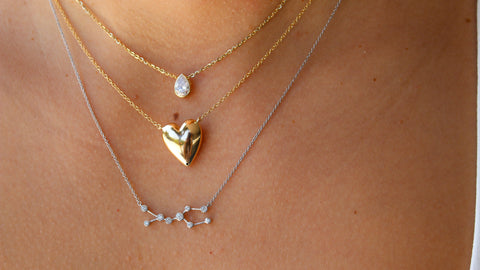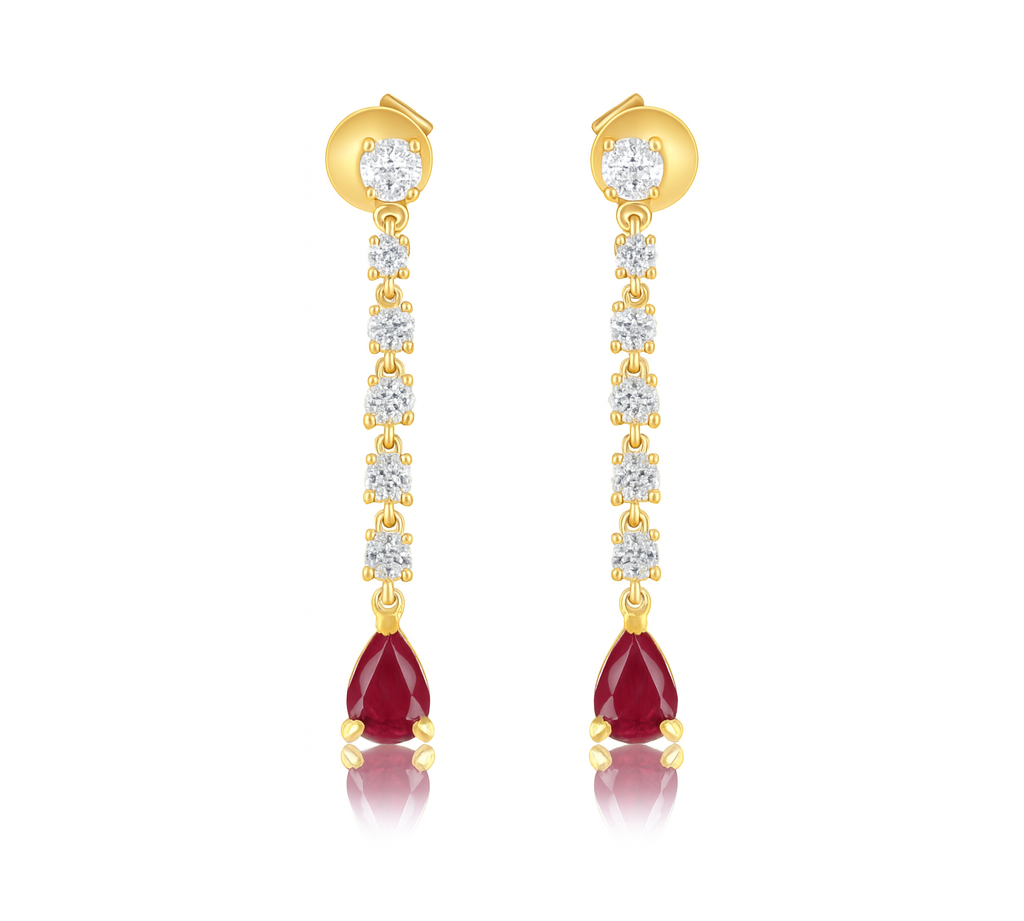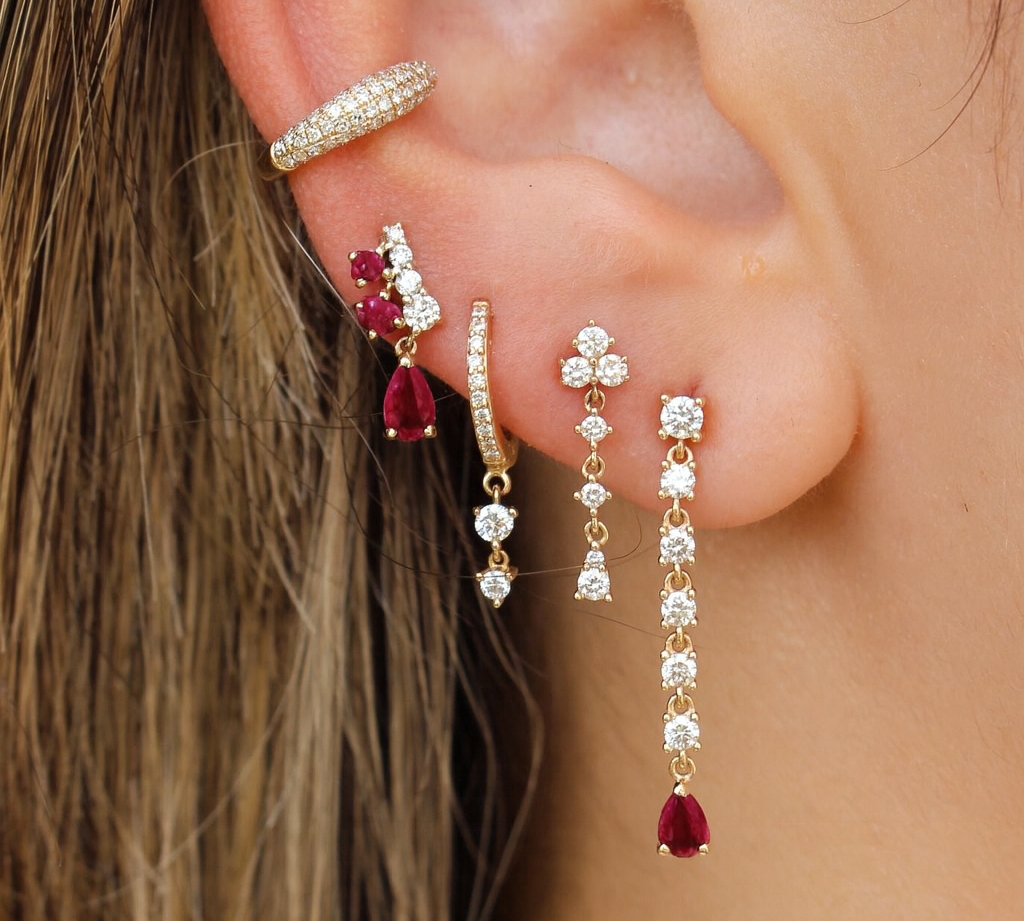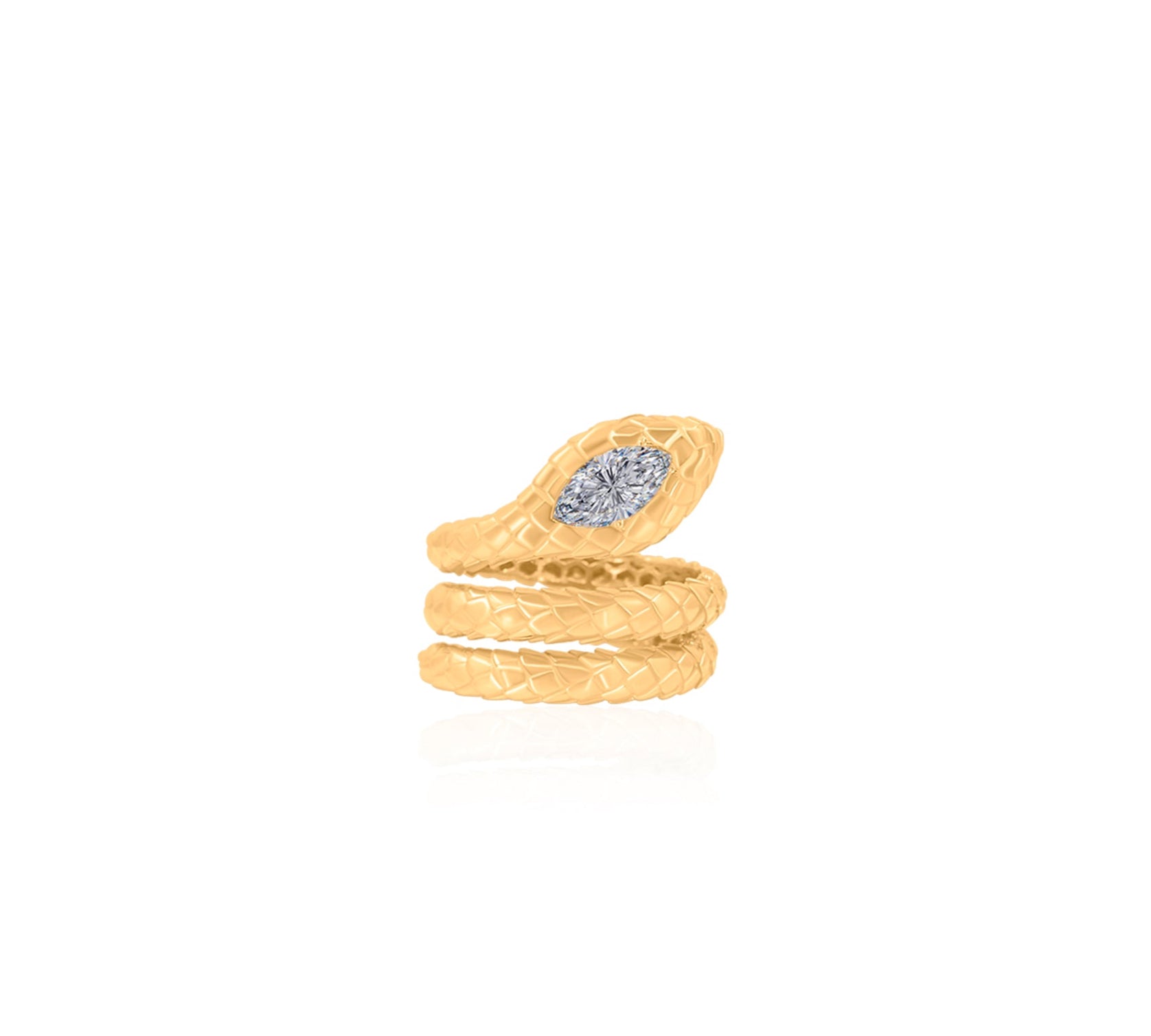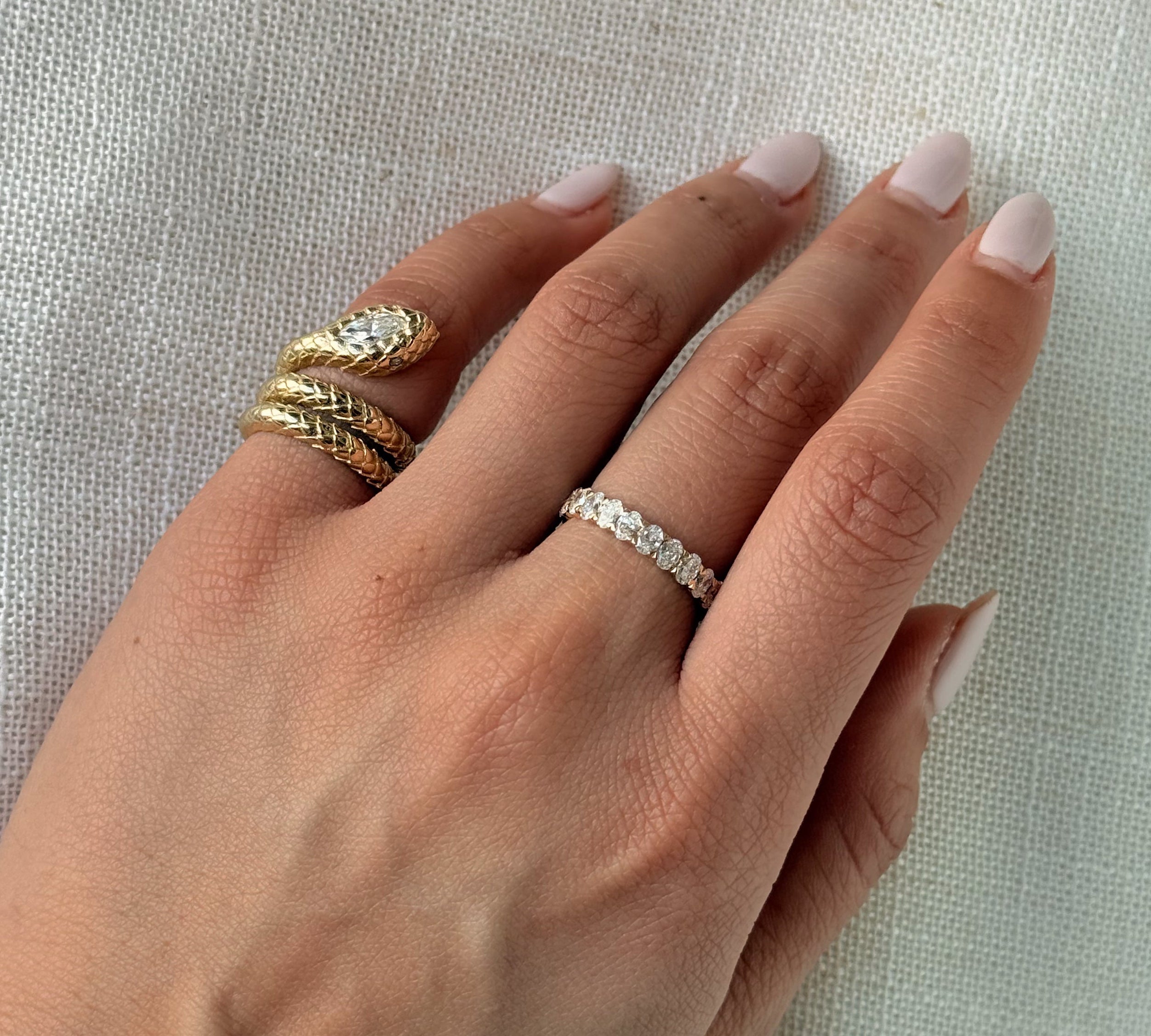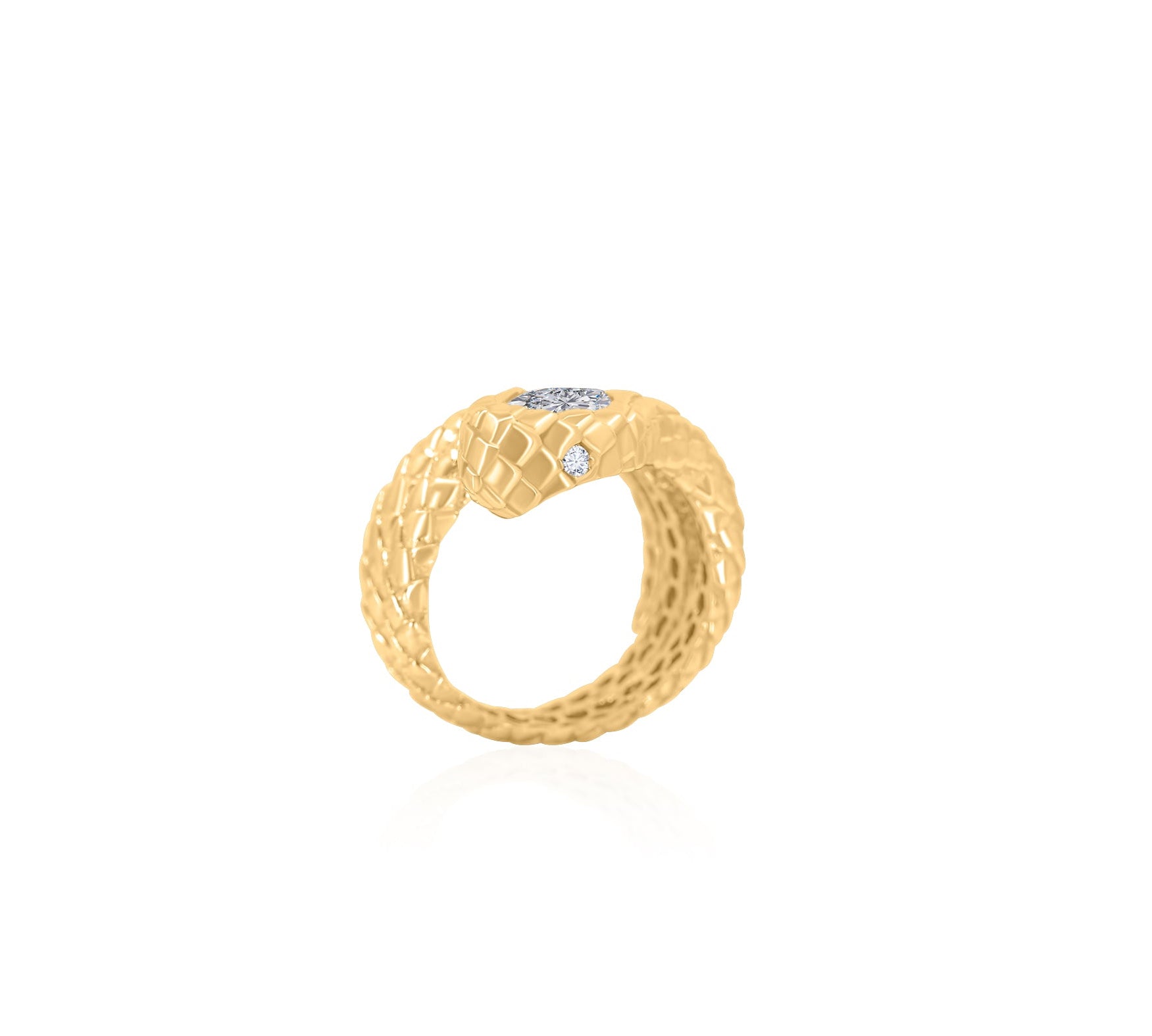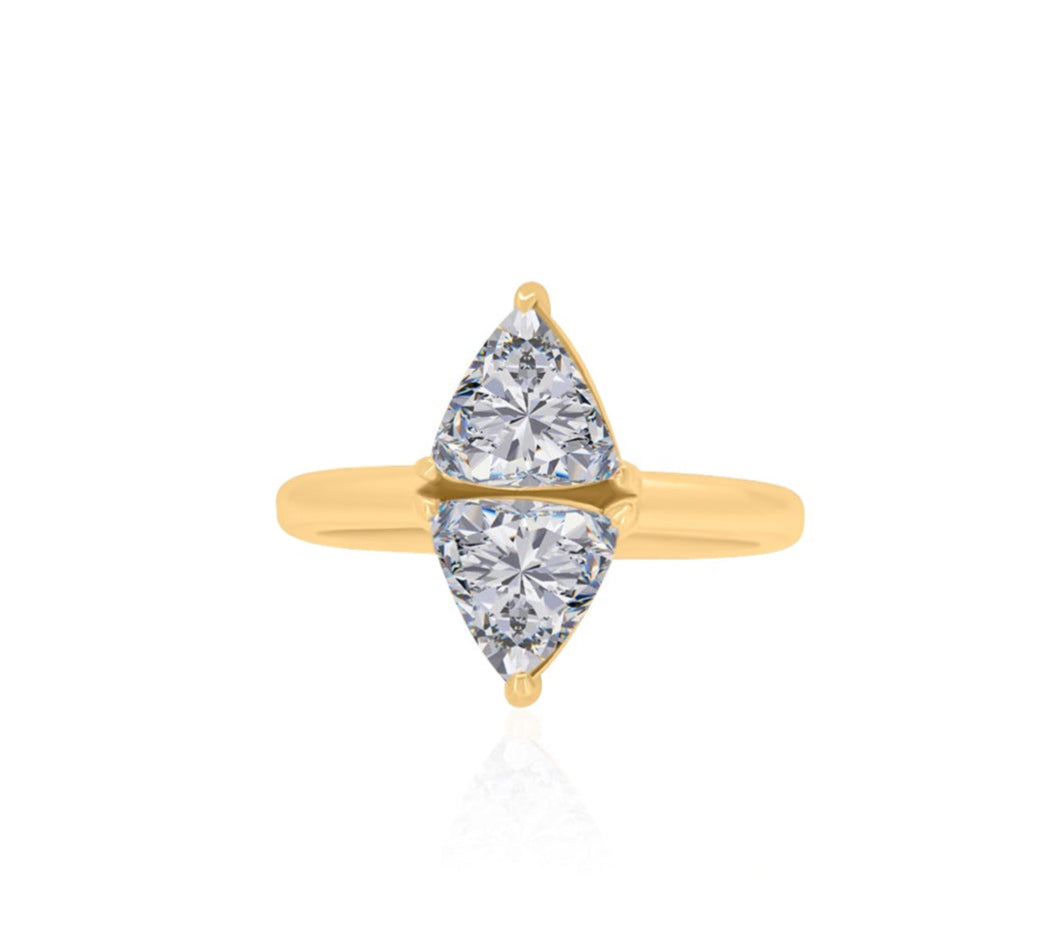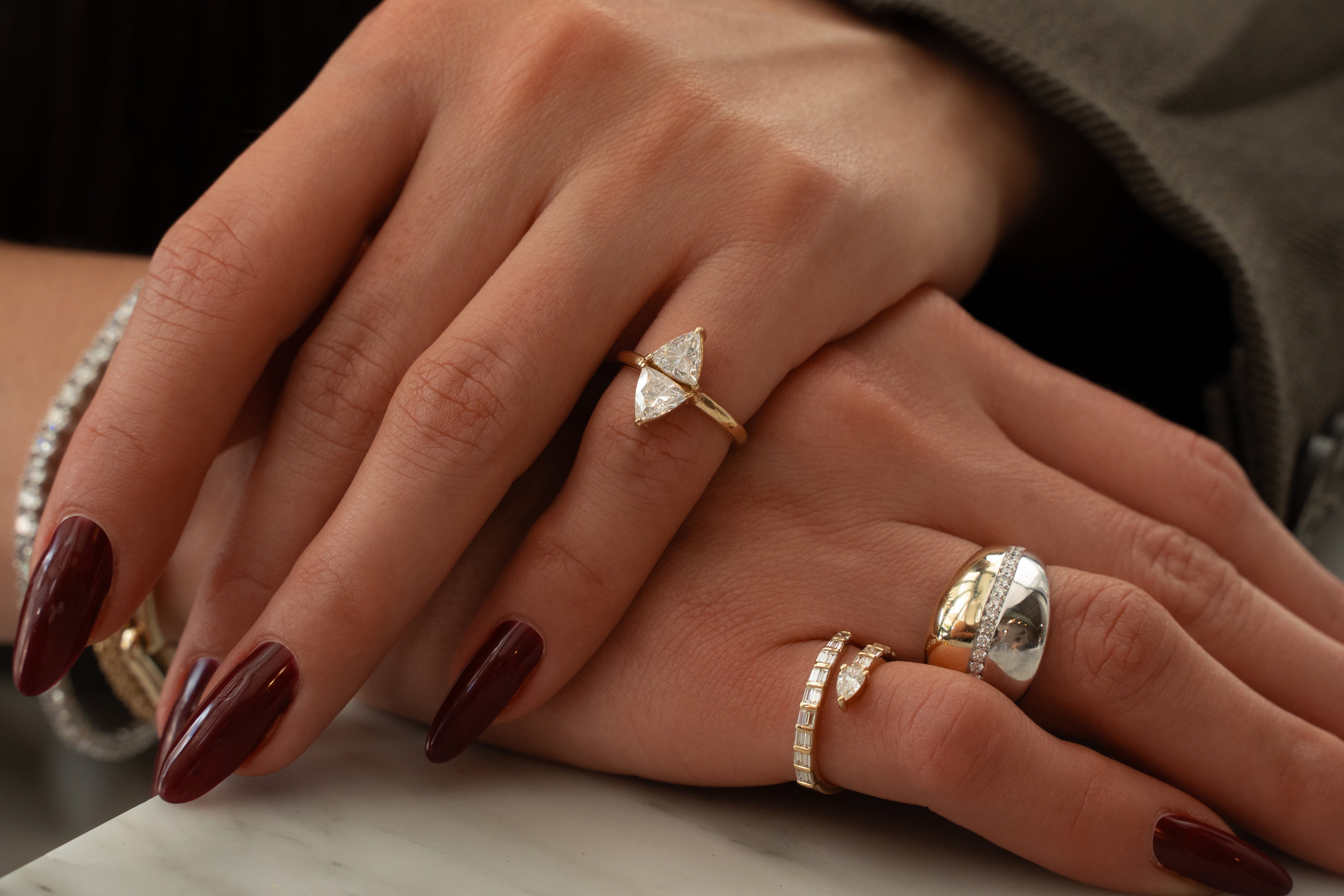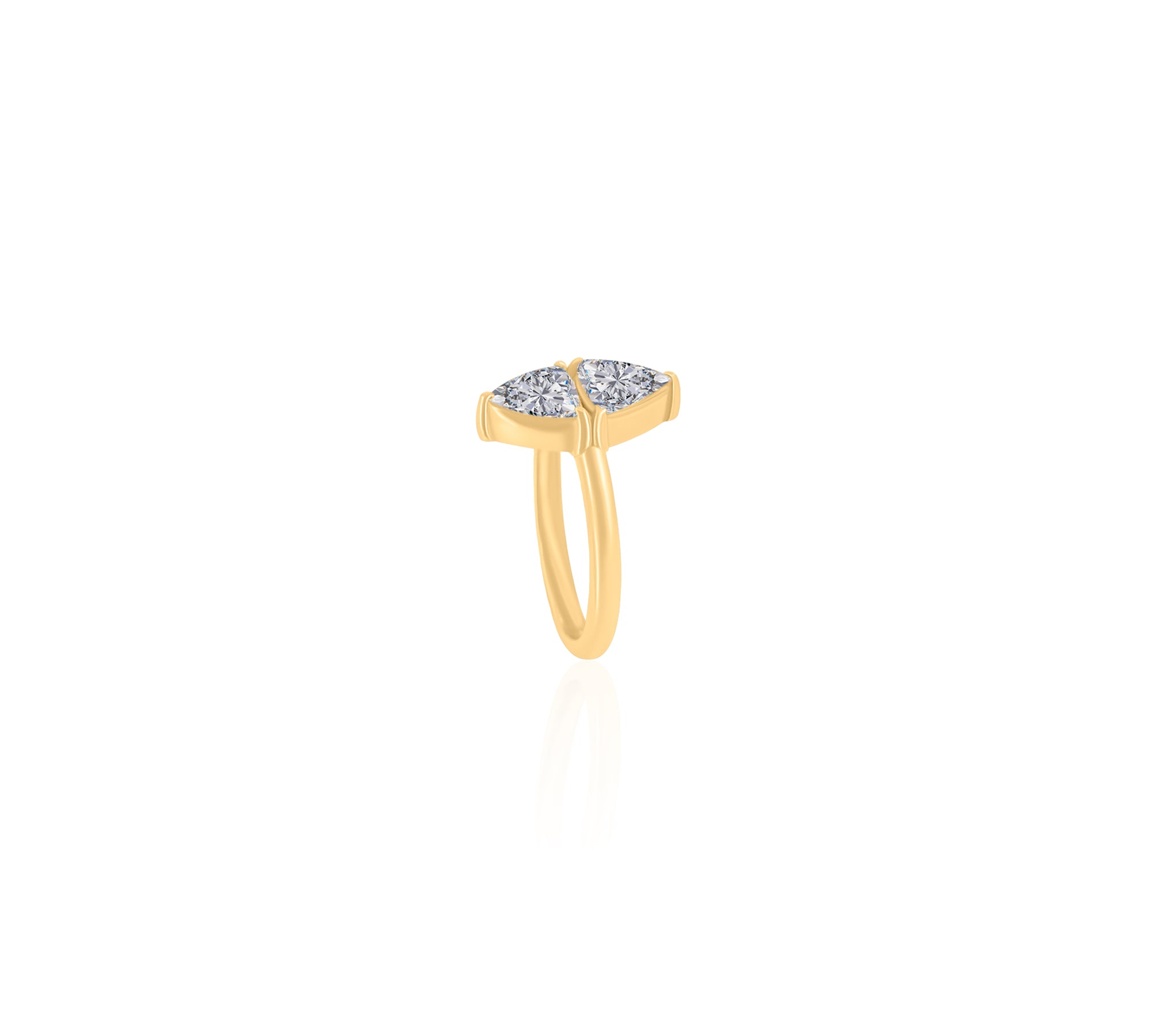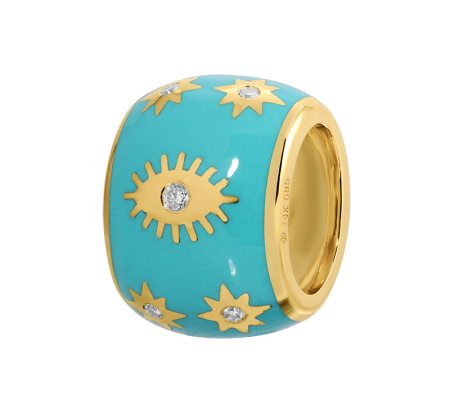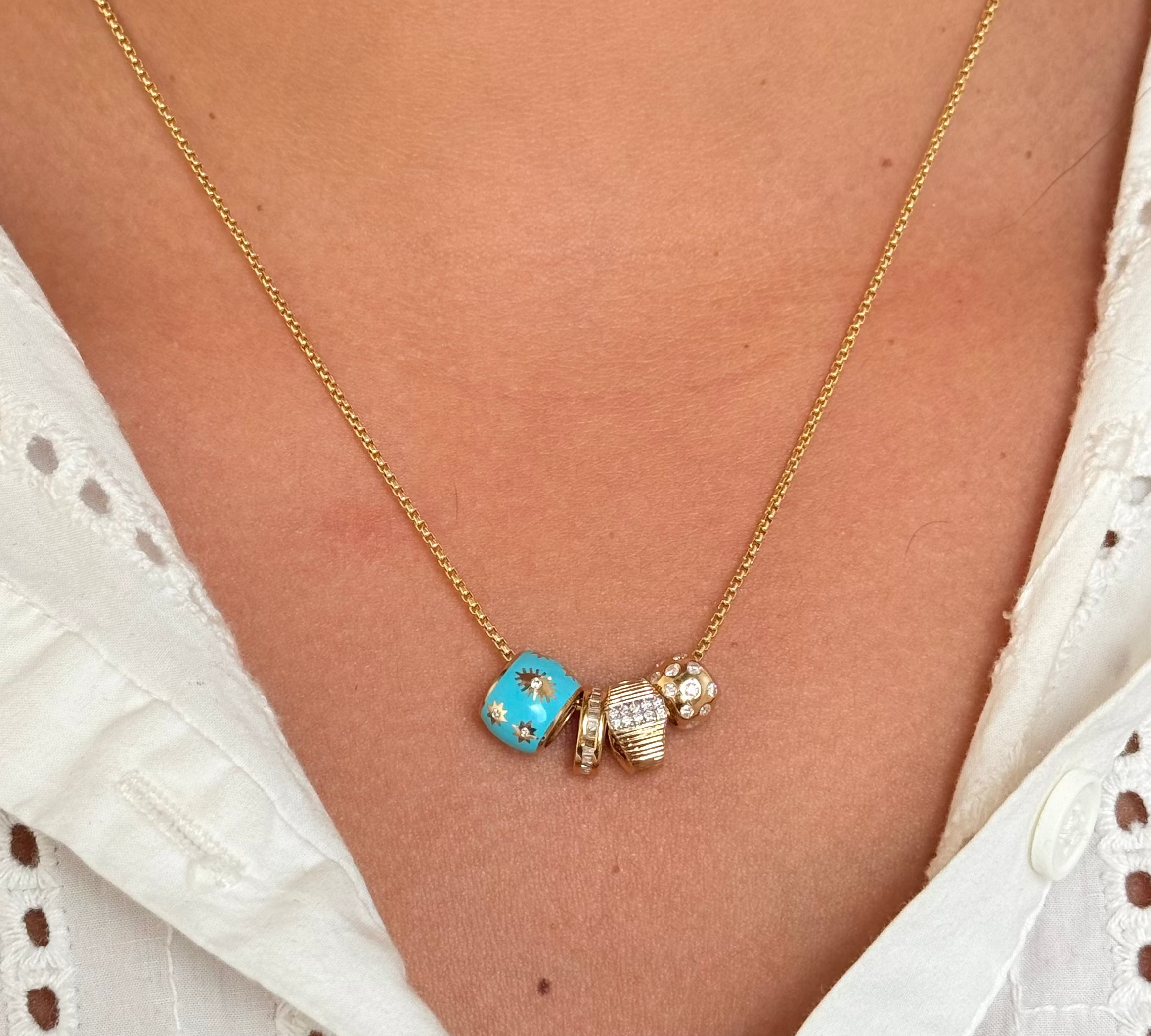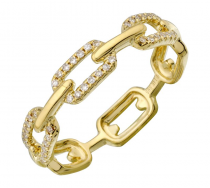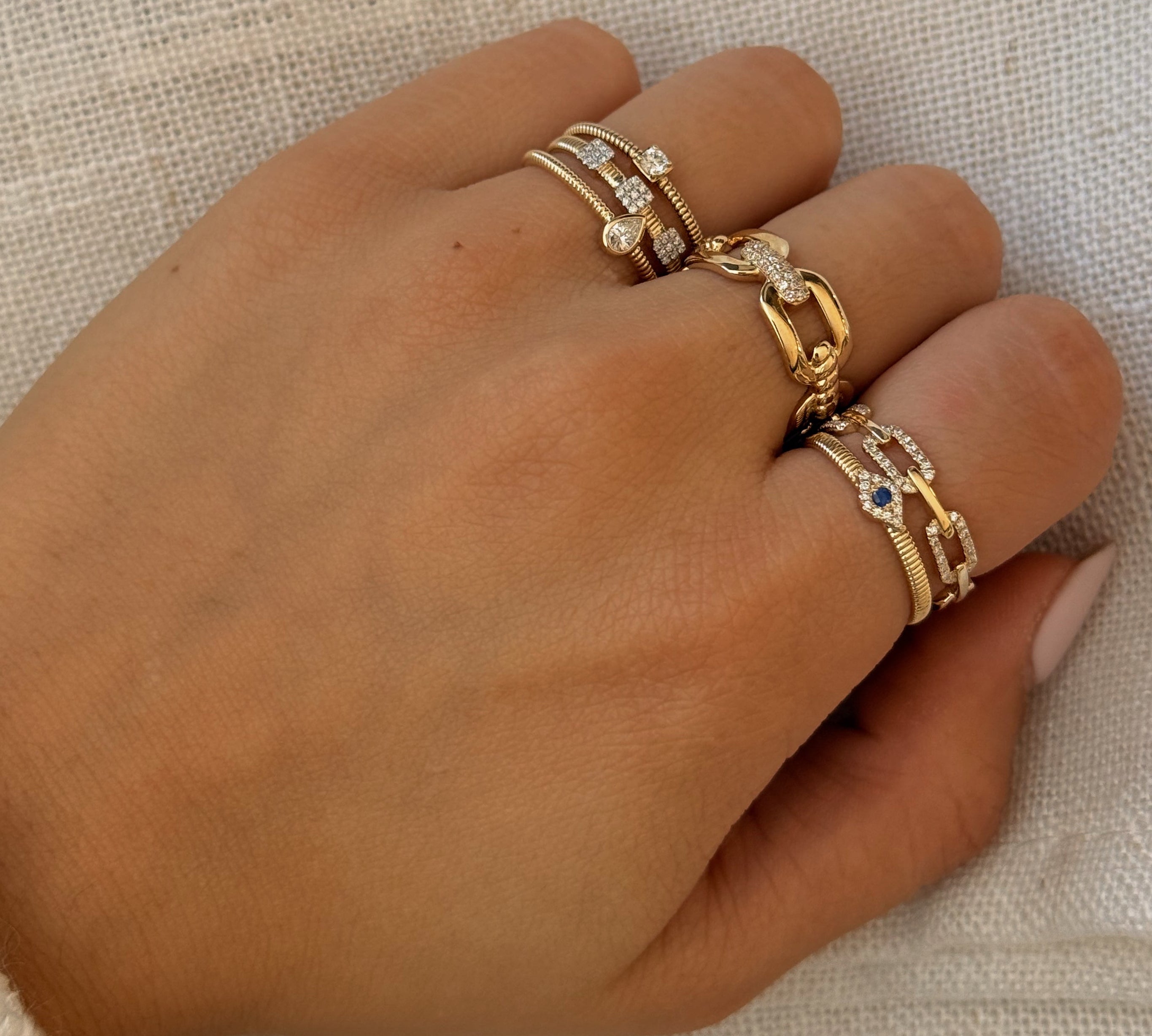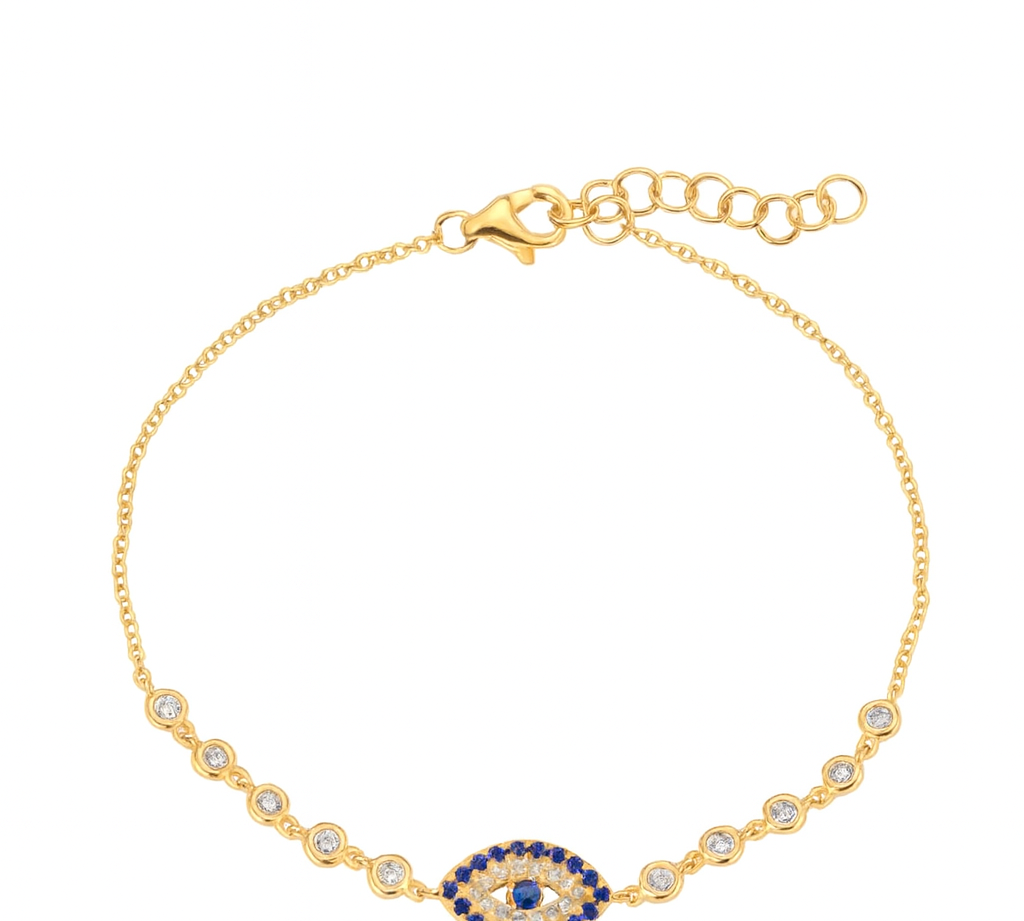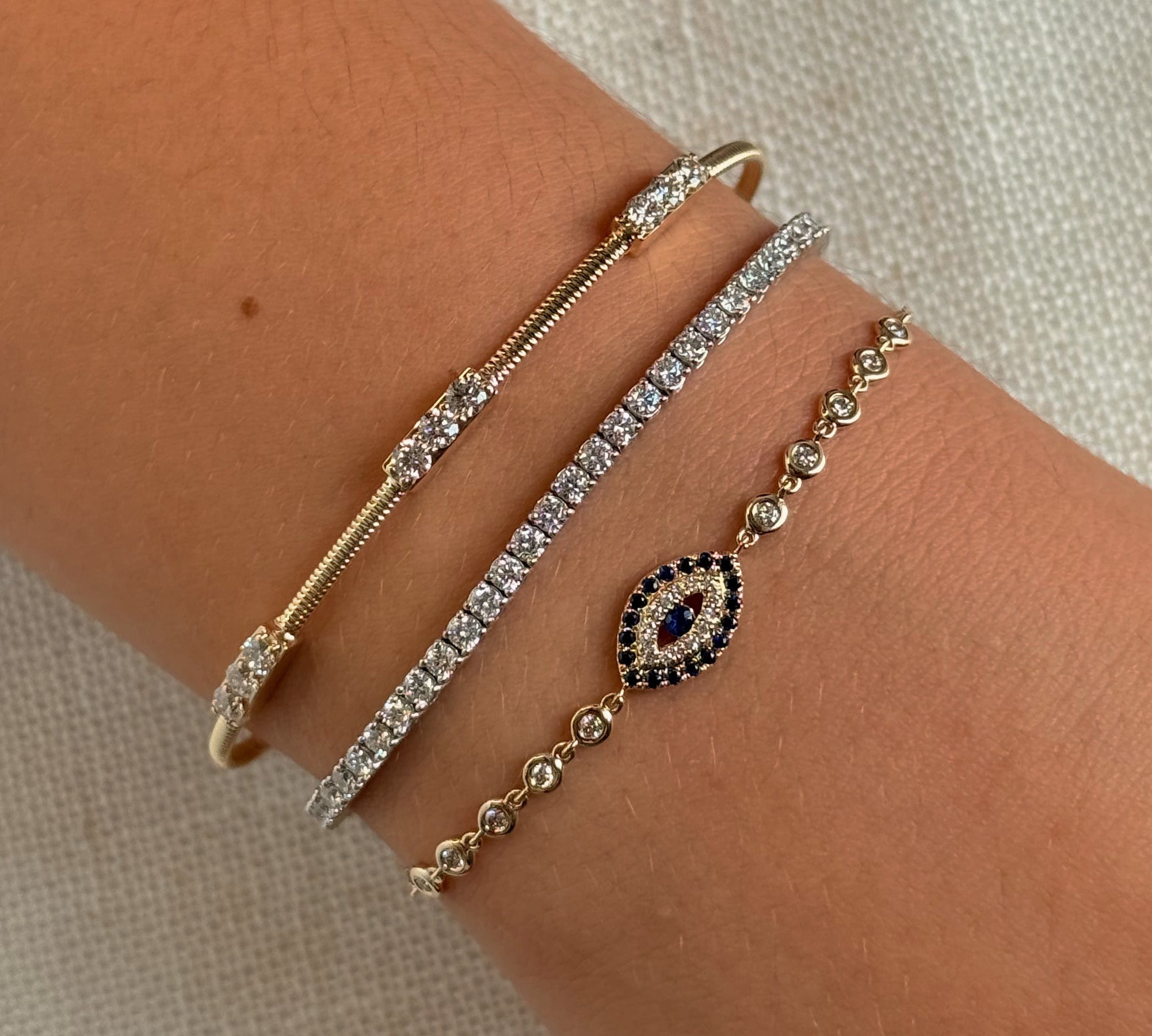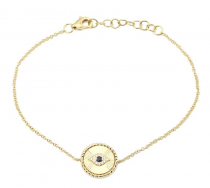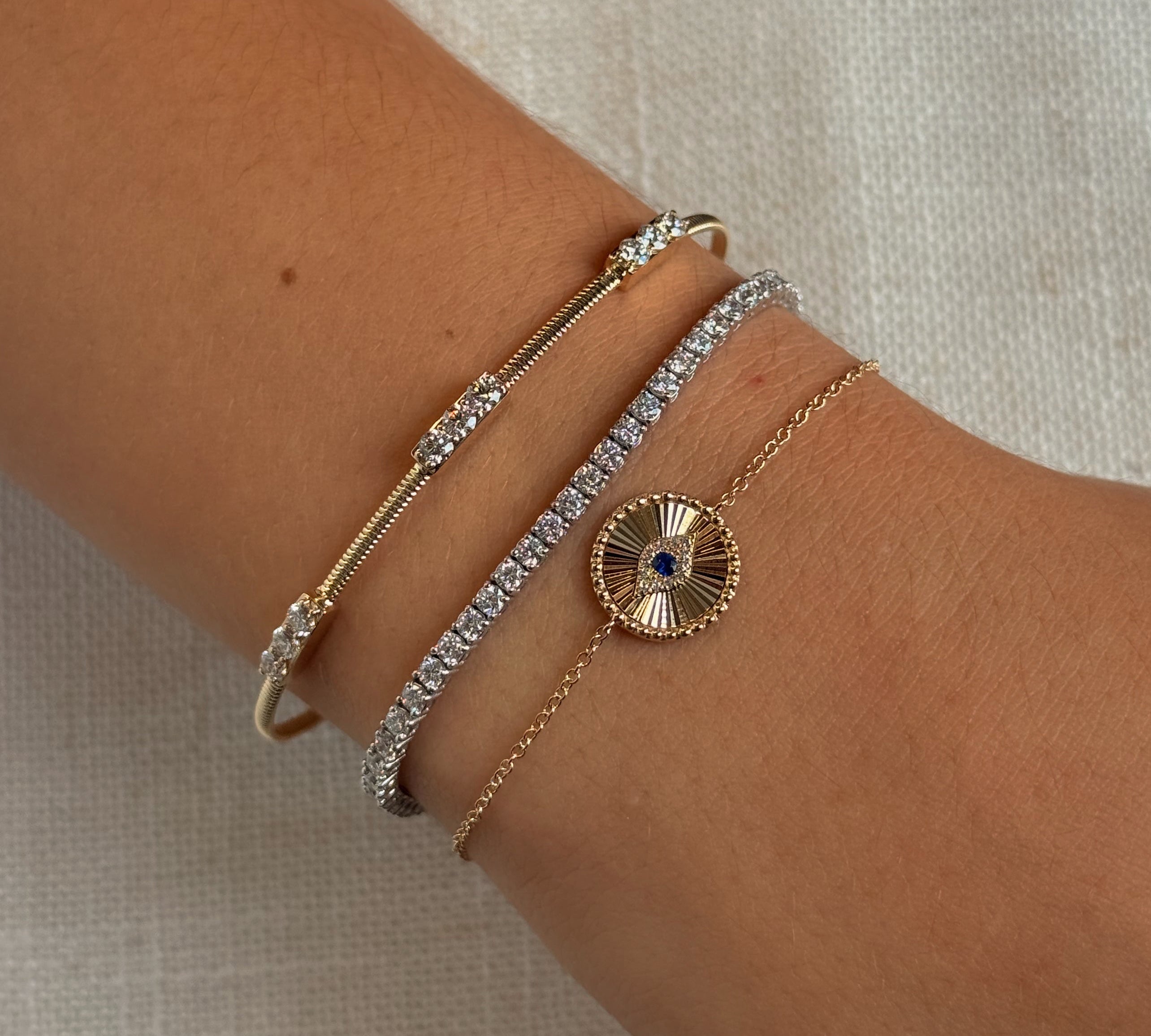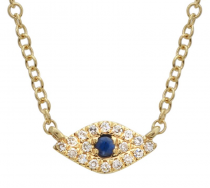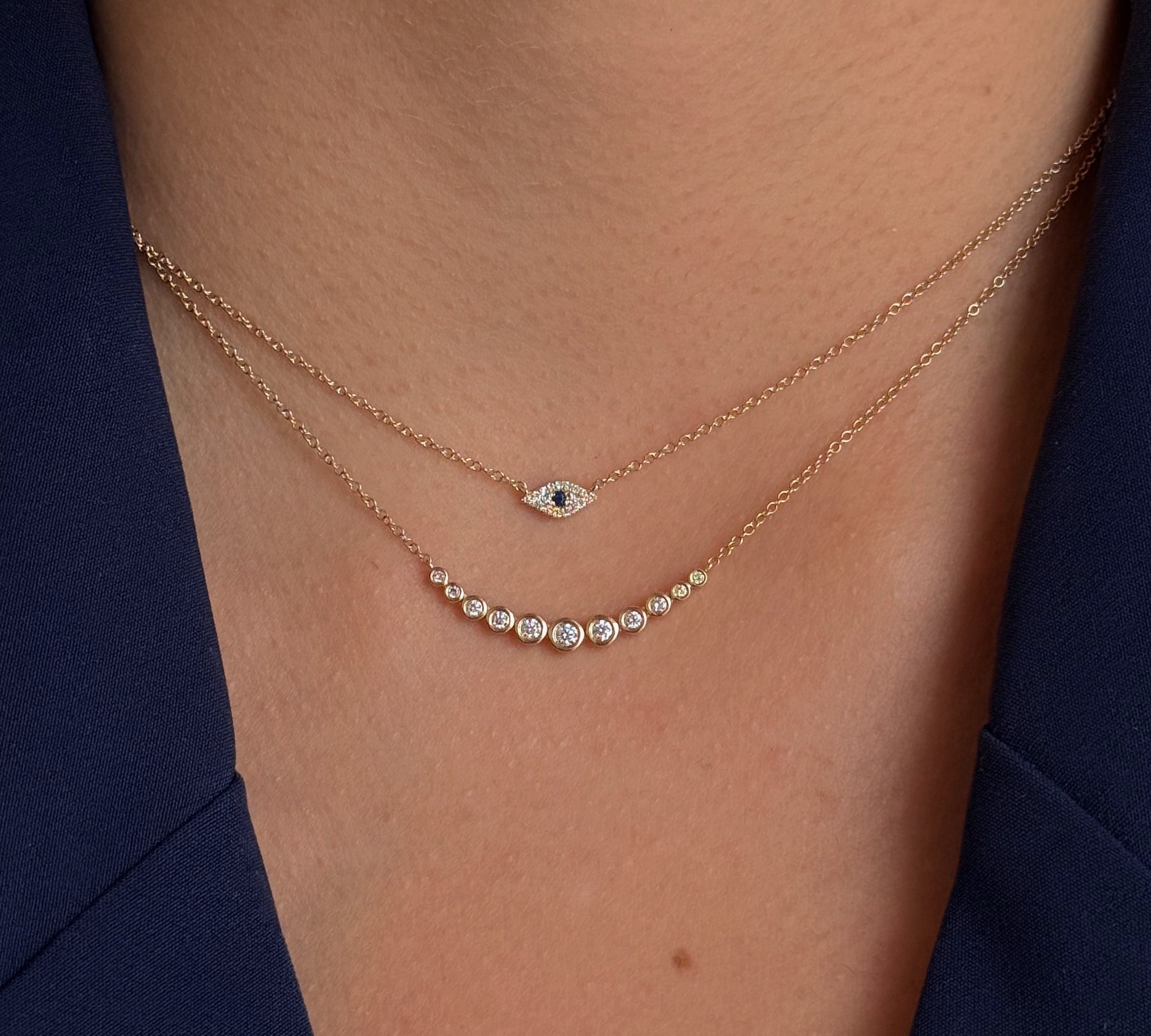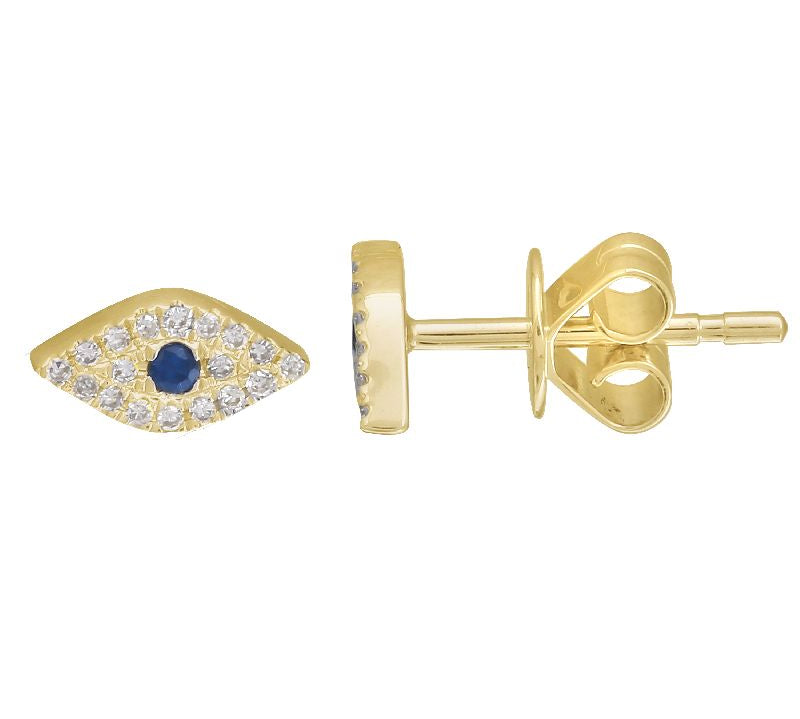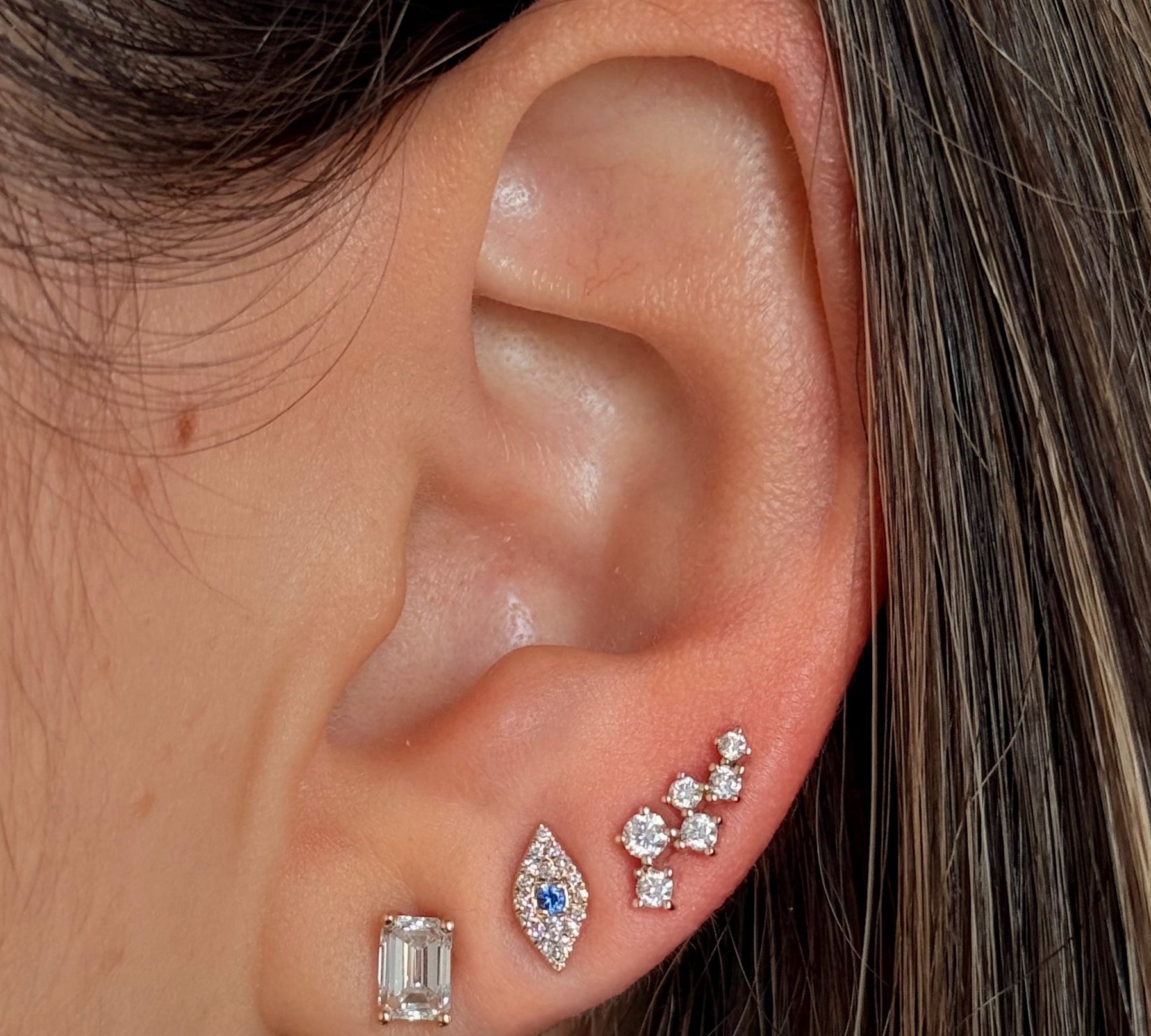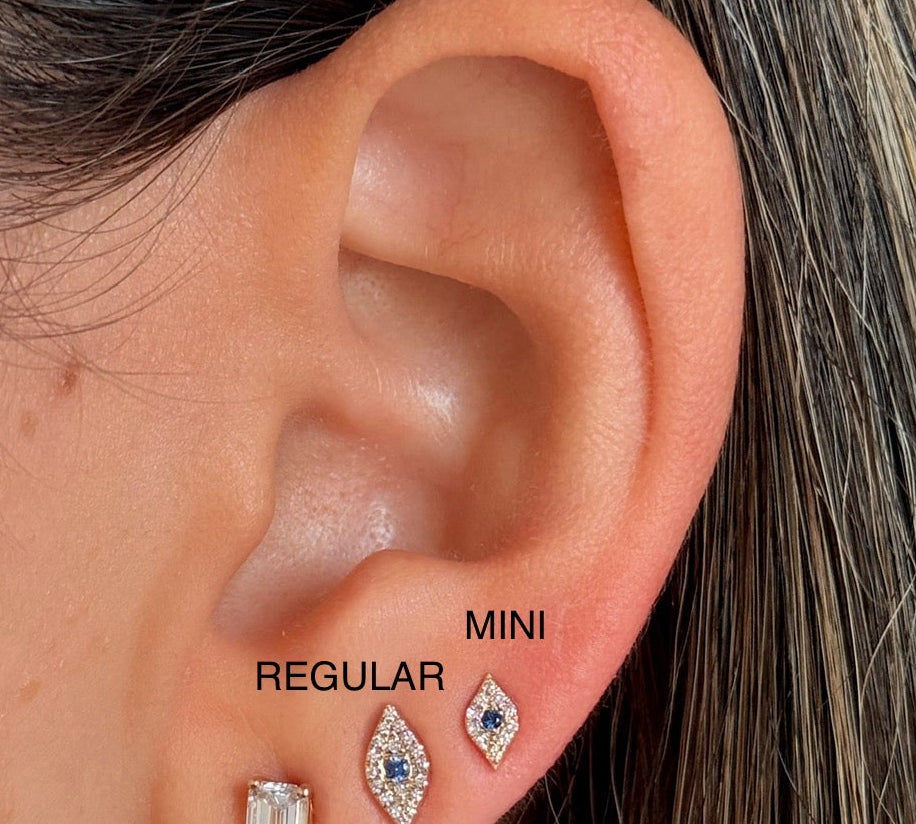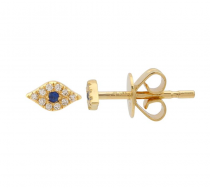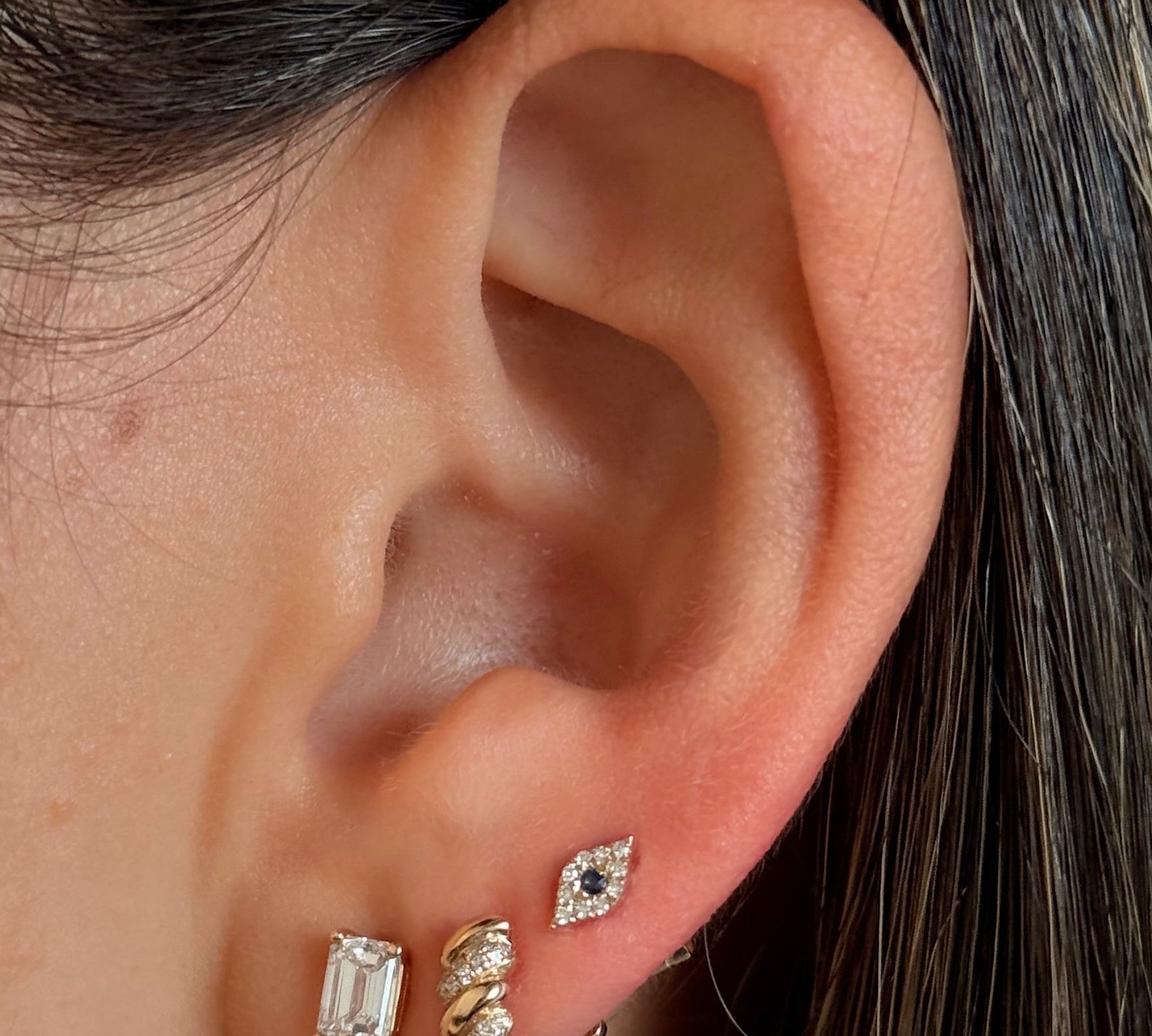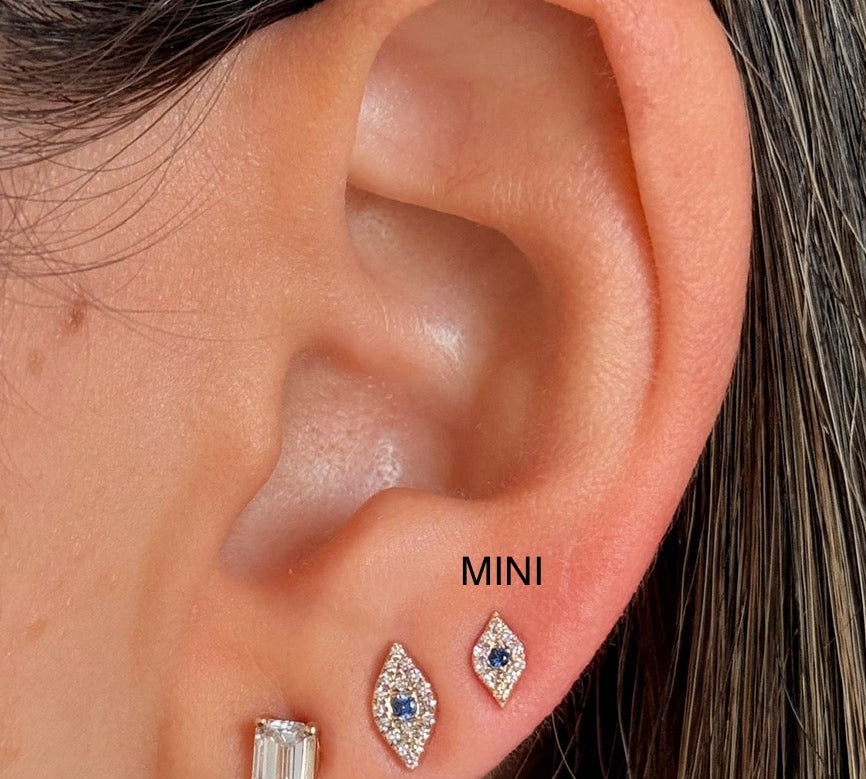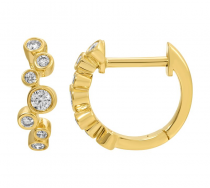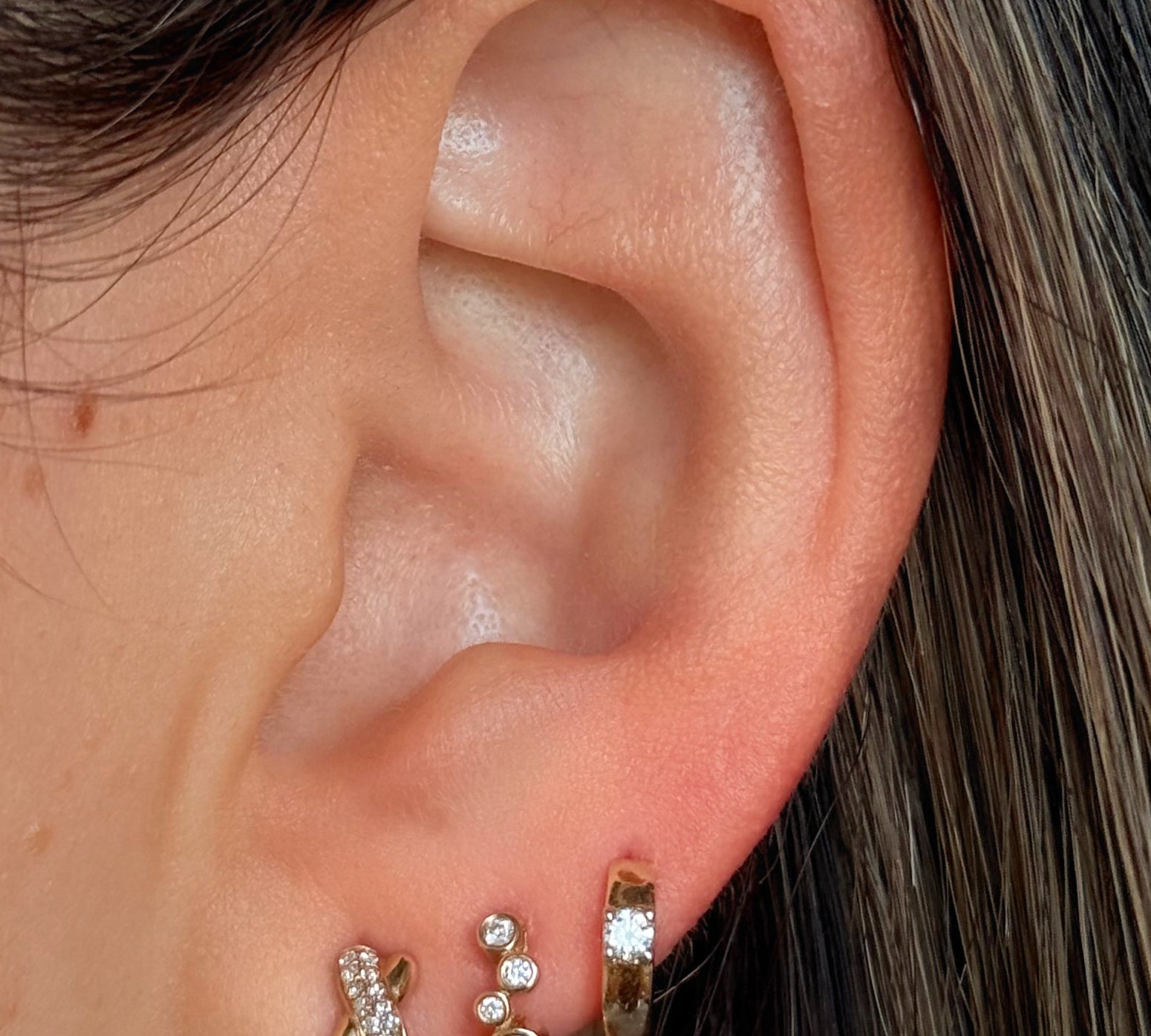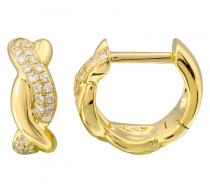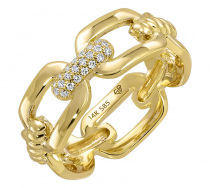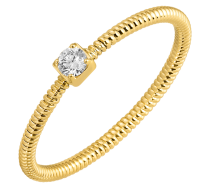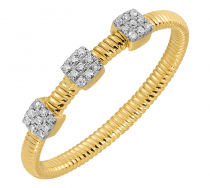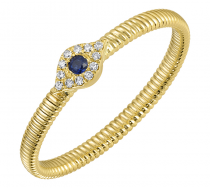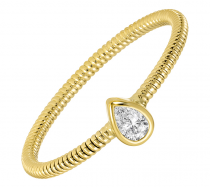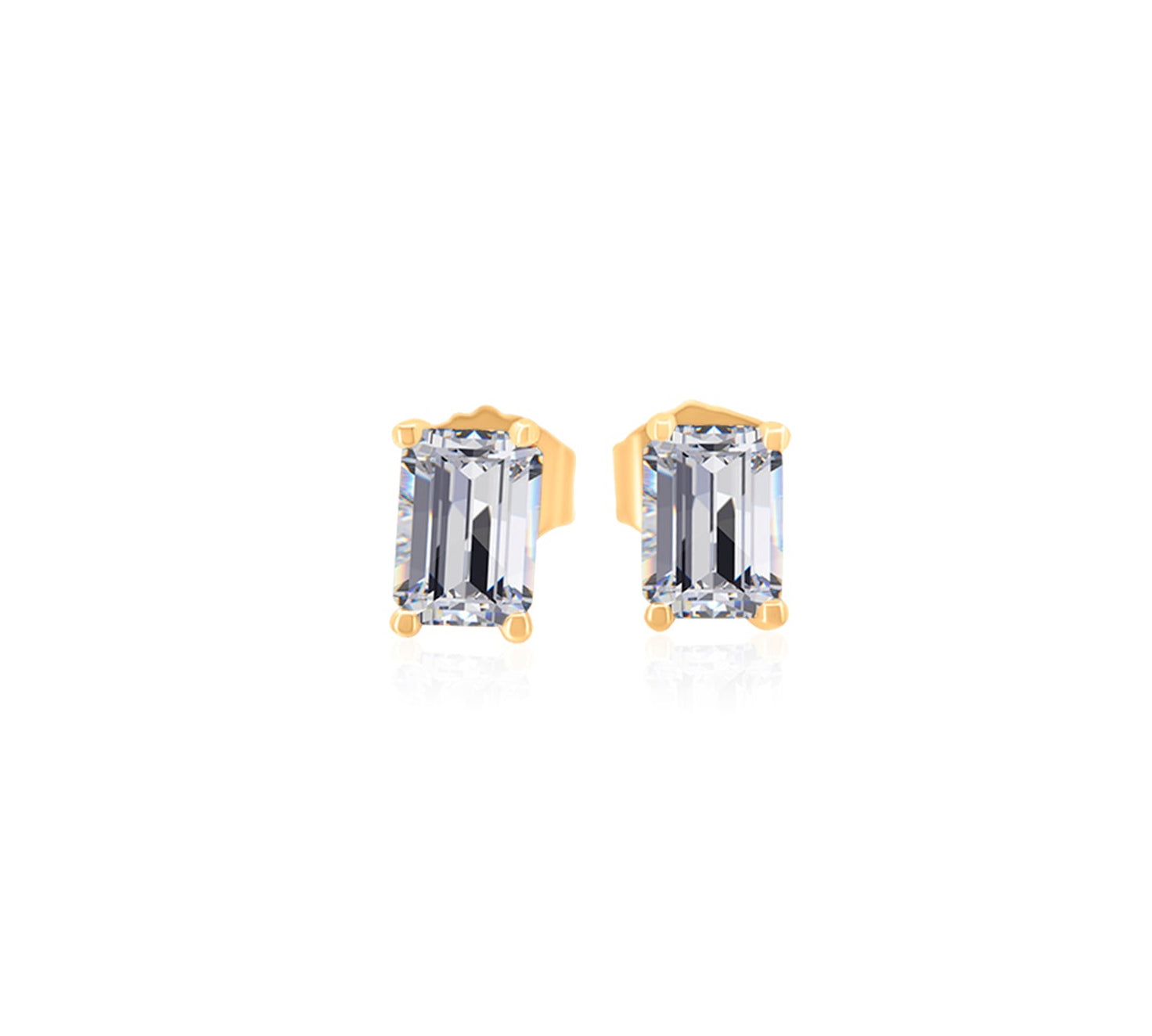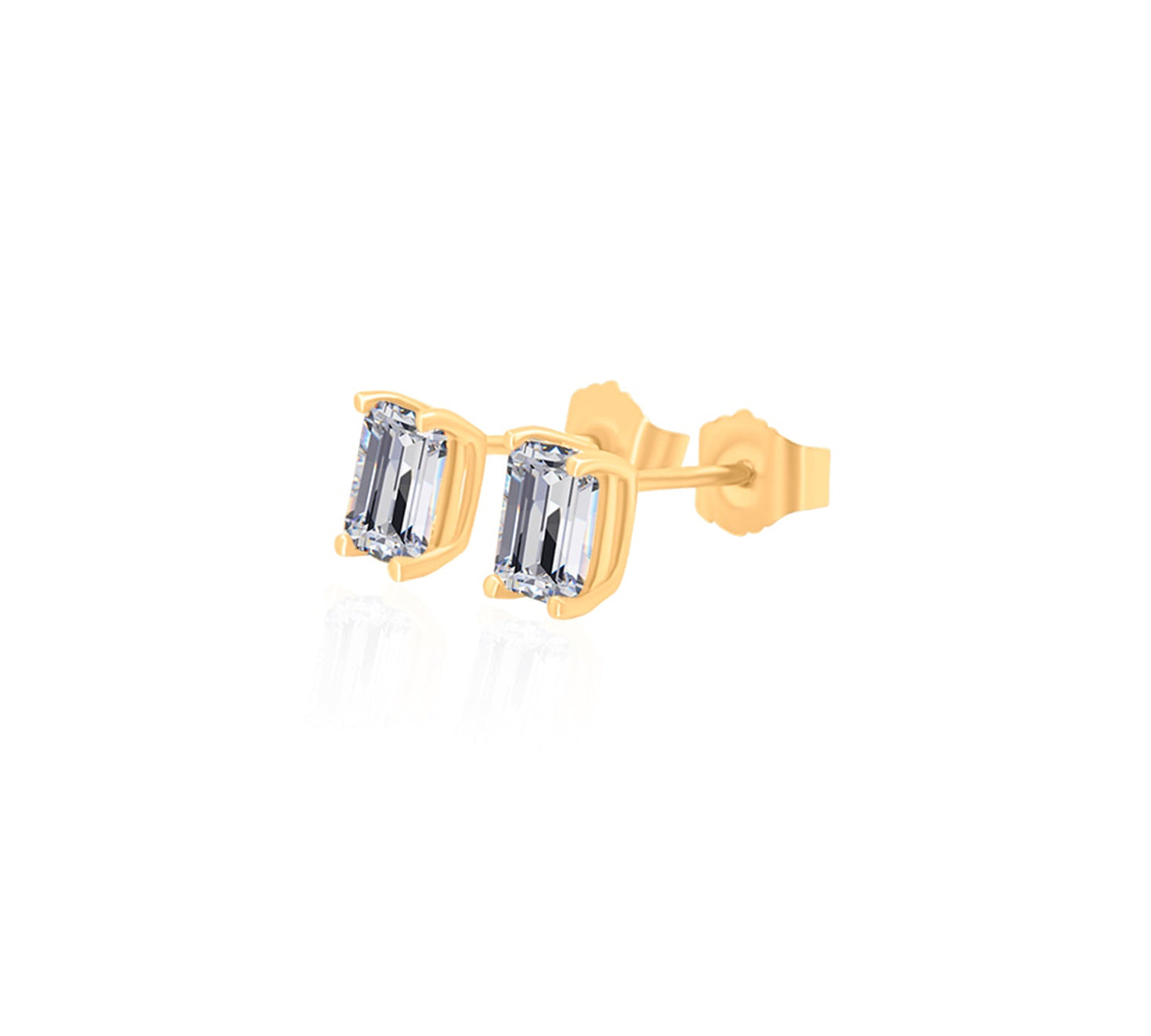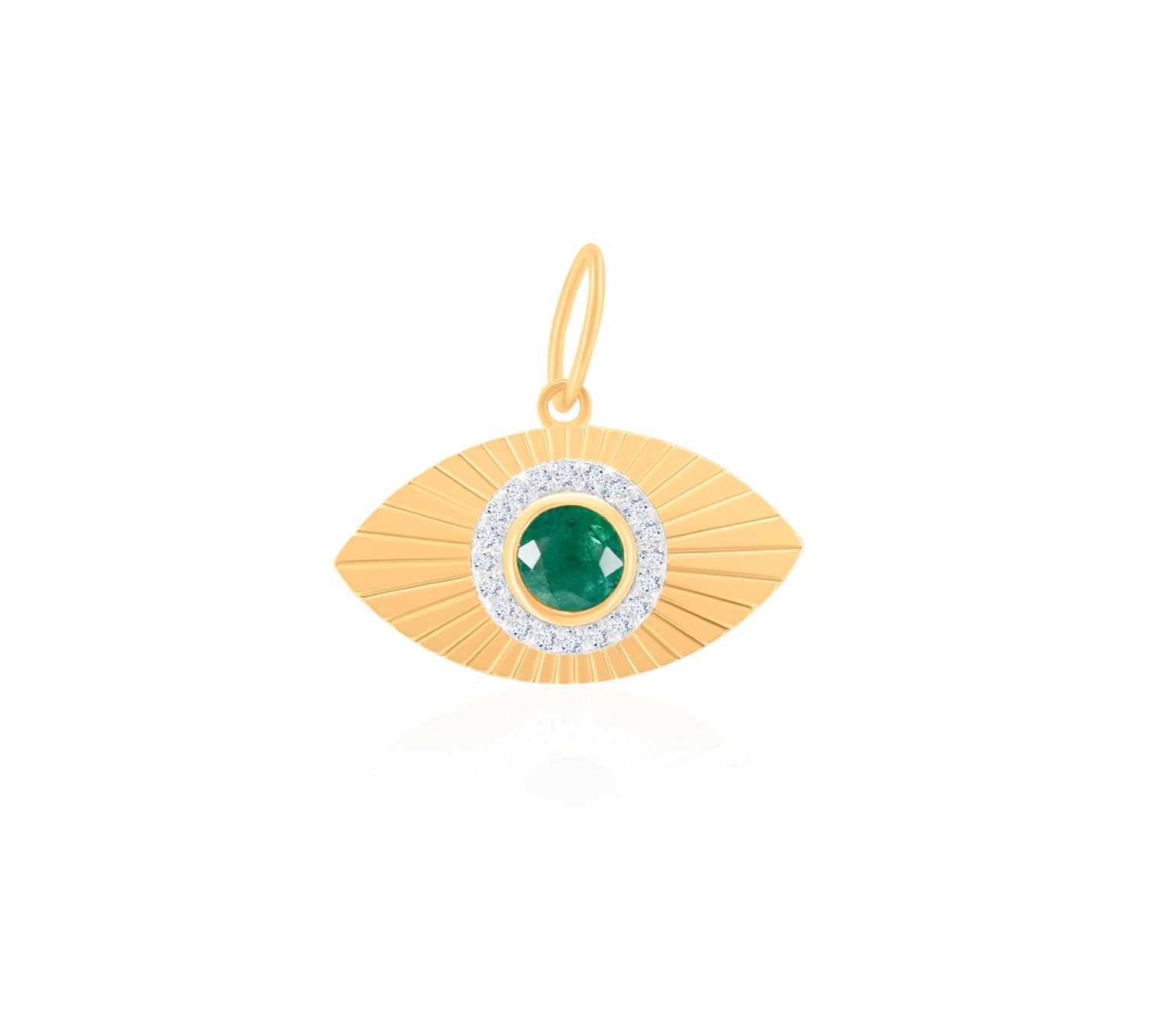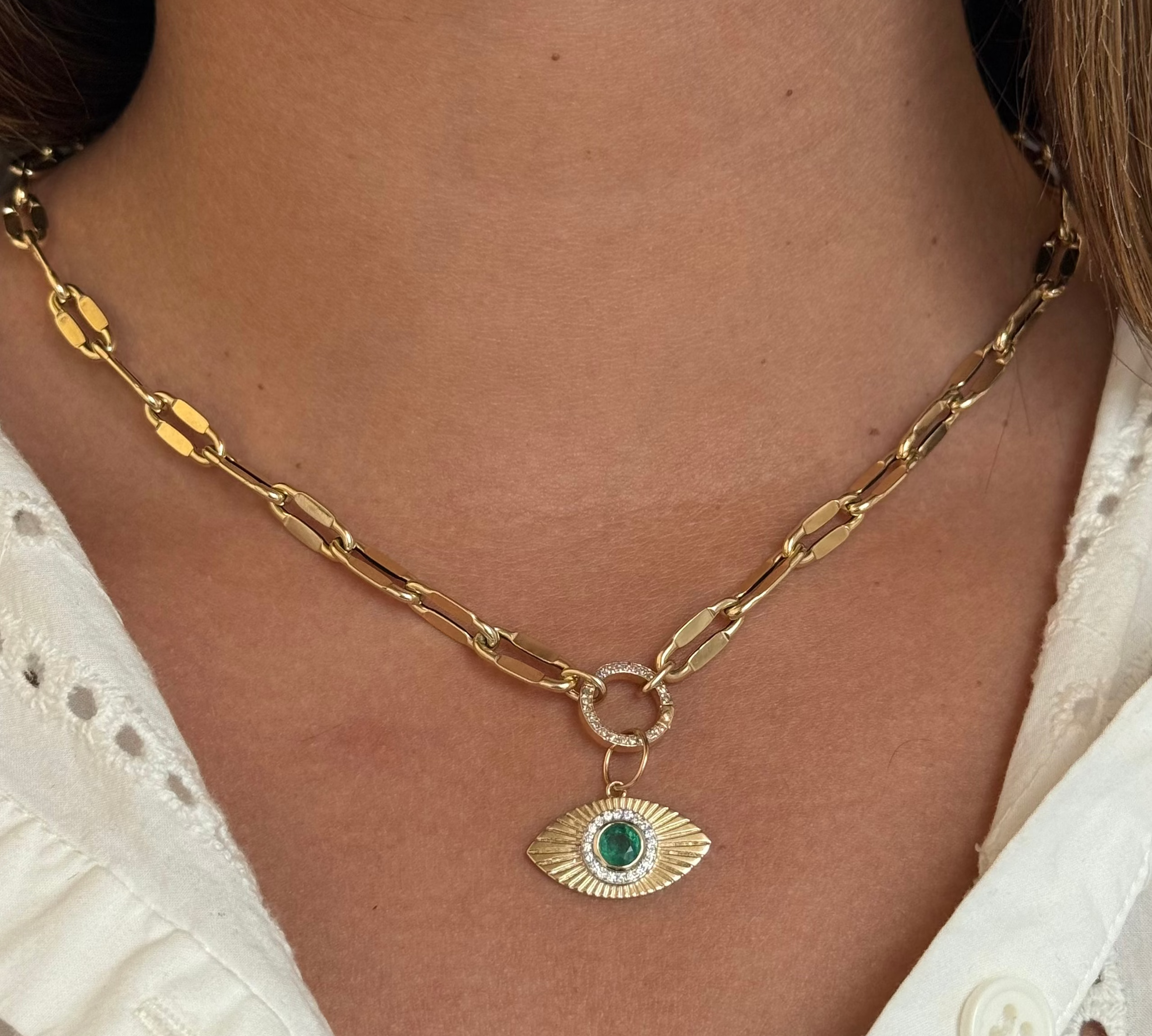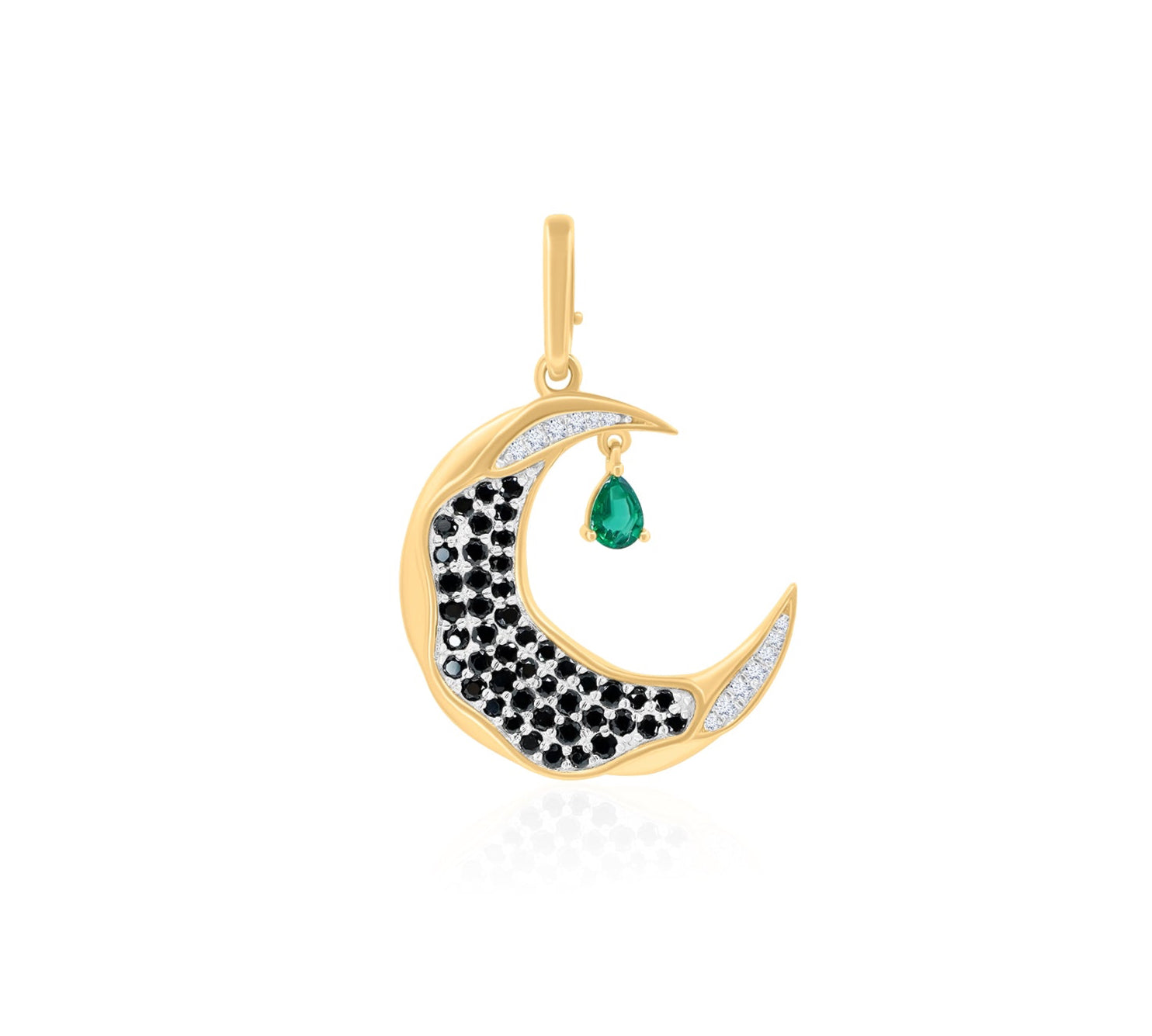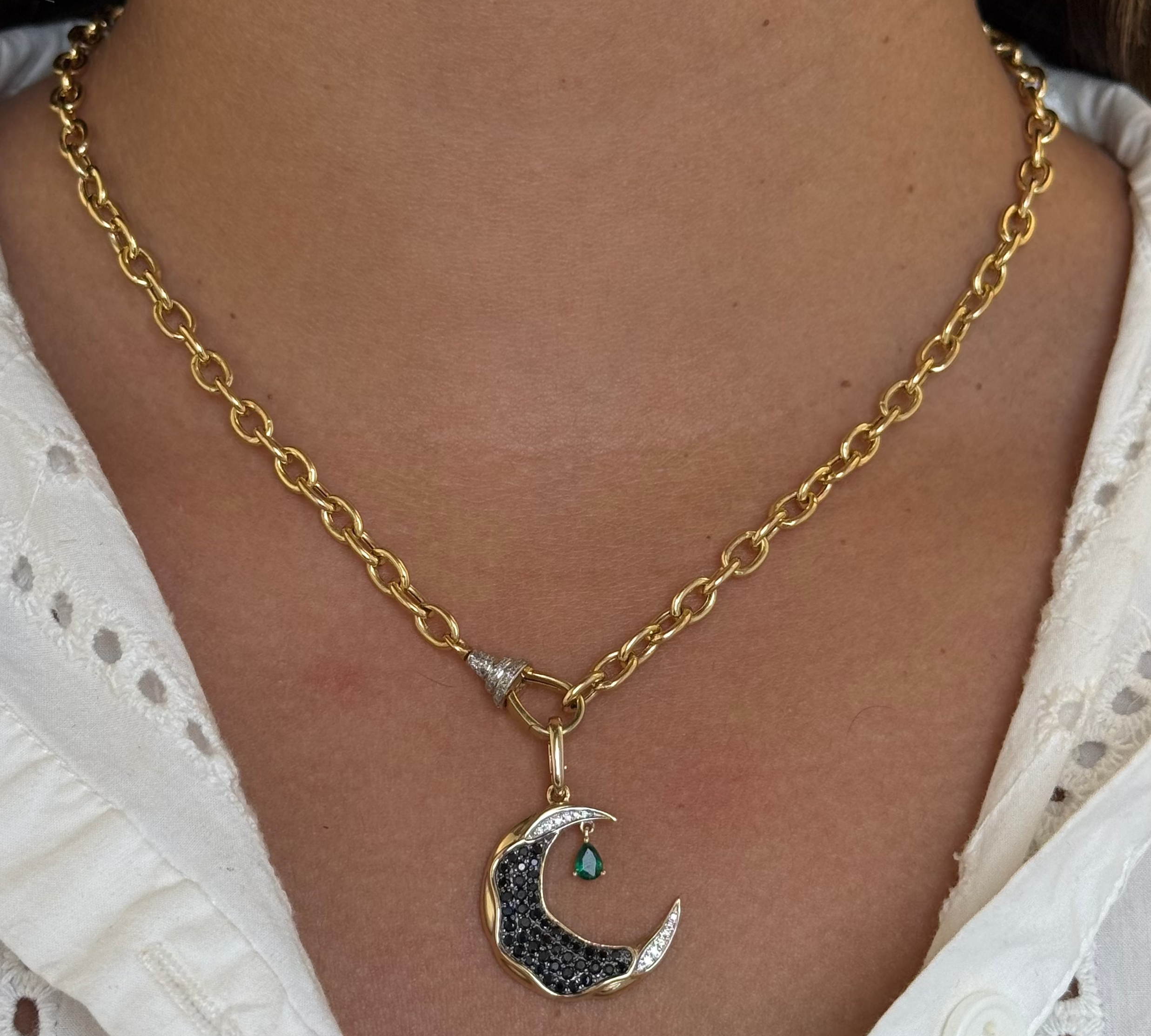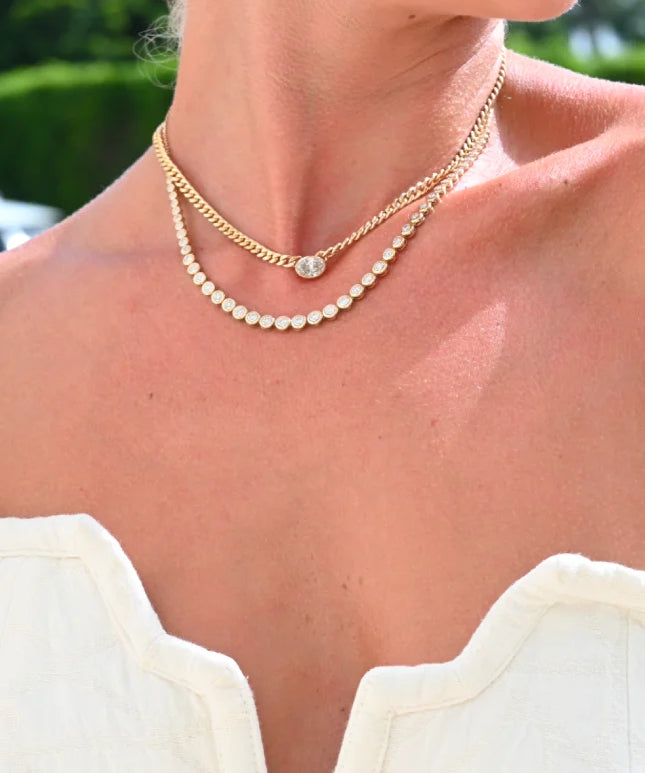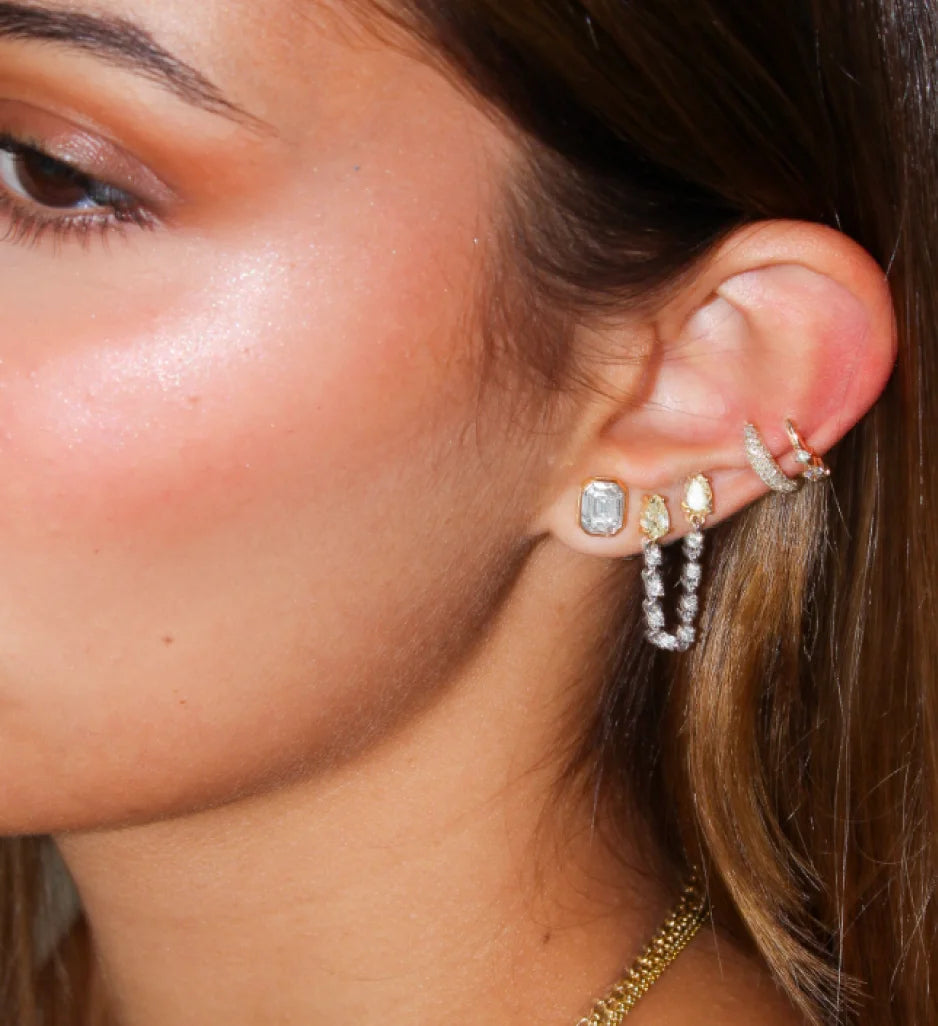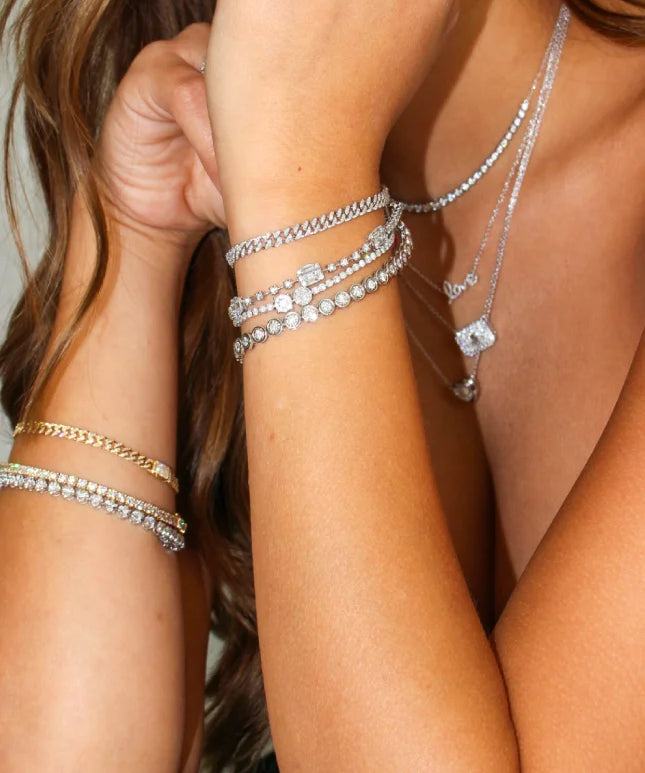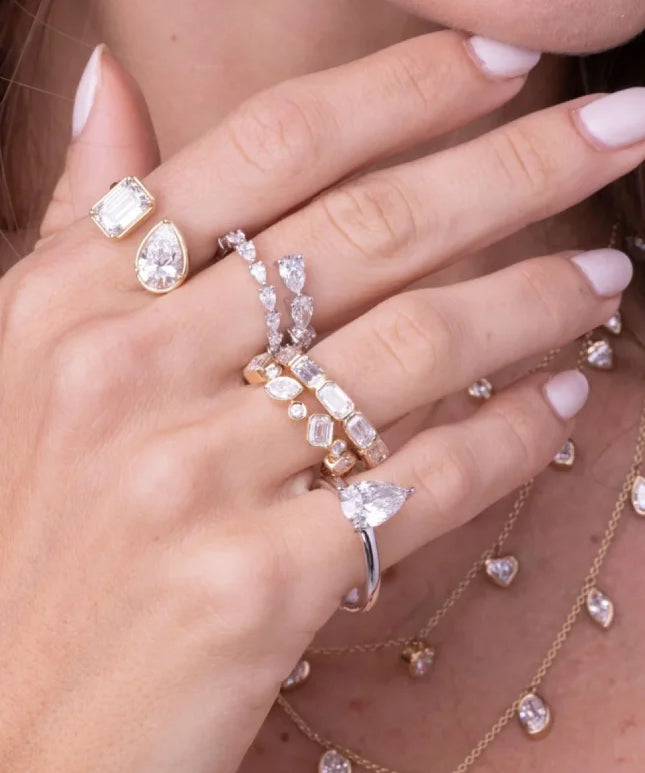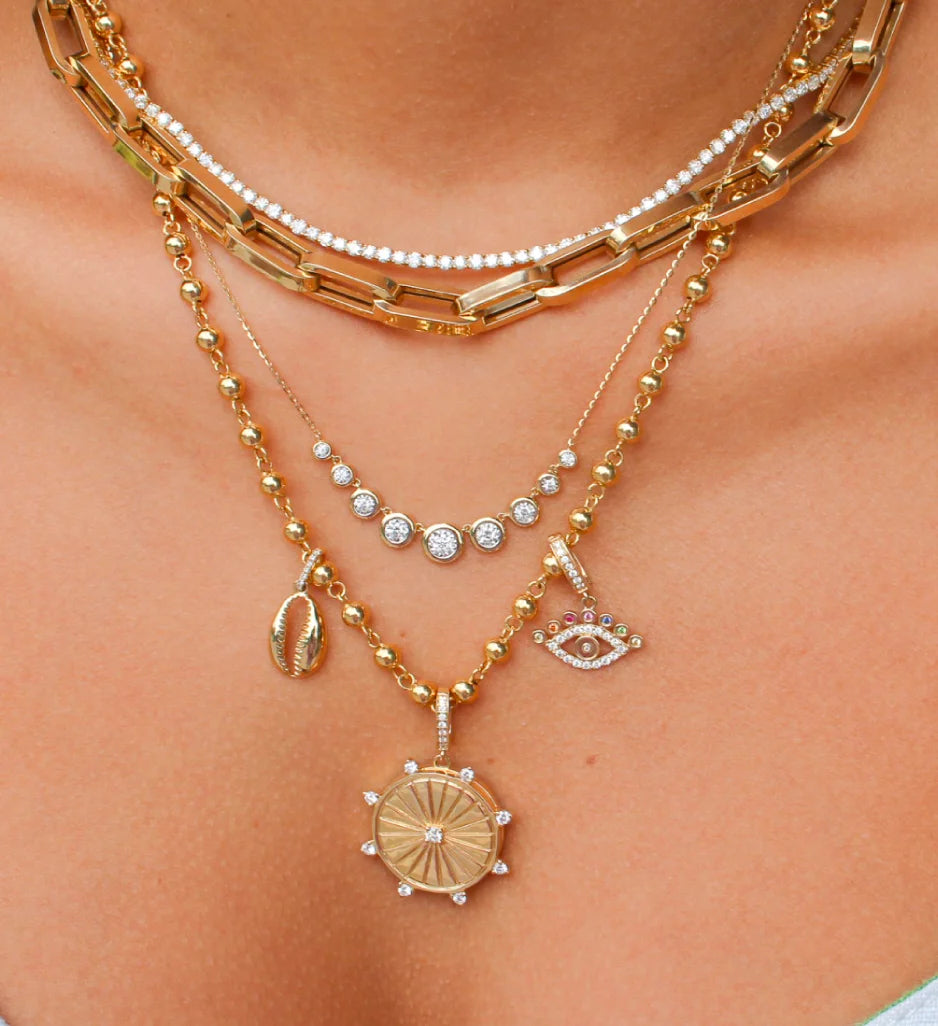Buying or inheriting a gold necklace is exciting, but how do you know if it’s real? With so many gold-plated and gold-filled pieces out there, it’s easy to mistake them for solid gold.
Just because a necklace looks gold doesn’t mean it is. Some people think real gold never tarnishes, but lower-purity gold can show signs of wear over time. Others assume that if a piece feels heavy, it must be real, but some fake jewelry is made to feel just as solid.
If you’re wondering whether your necklace is real gold, there are easy ways to find out. Whether you want to check a recent purchase or confirm the value of a family heirloom, here’s how you can test it.
Understanding Gold Purity and Types
Gold jewelry comes in different purity levels, measured in karats (K). The higher the karat, the more gold it has:
-
24K gold – Pure gold with a deep yellow color. It looks beautiful but is soft and scratches easily.
-
18K gold – Contains 75% gold, making it strong while keeping a rich gold tone.
-
14K gold – Has 58.3% gold, making it durable and a popular choice for everyday wear.
-
10K gold – Made of 41.7% gold, with more alloy metals mixed in. It’s strong, affordable, and resistant to scratches.
If a necklace is labeled 10K or higher, it’s real gold, but the purity varies. Anything lower is usually gold-plated or made of other metals.

Solid Gold vs. Gold-Plated vs. Gold-Filled
Not all gold jewelry is the same, and knowing the difference helps when choosing what to buy:
-
Solid Gold – The entire piece is made of gold (10K, 14K, etc.), though mixed with other metals for strength. It lasts a lifetime and won’t wear off.
-
Gold-Plated – A thin layer of gold is coated over another metal, like brass or copper. Over time, the gold can fade, showing the base metal underneath.
-
Gold-Filled – Has a thicker layer of gold bonded to a base metal. It’s stronger than gold-plated jewelry but still not solid gold.

Simple At-Home Tests
If you’re wondering whether your necklace is real gold, there are a few simple tests you can try at home. These methods aren’t as exact as professional testing, but they can give you a good idea.
Check for Hallmarks and Stamps
One of the easiest ways to check if your necklace is real gold is to look for a hallmark, a small stamp that shows the gold’s purity. You can usually find this marking on the clasp or a small tag near the chain.
Here’s what the markings mean:
-
10K, 14K, 18K, 24K – The higher the number, the more gold it contains.
-
585, 750, 999 – European markings showing gold content in parts per thousand. For example, 585 means 58.5 percent gold, or 14K.
-
GP, GEP, or GF – These mean the necklace is gold plated or gold filled, not solid gold.
If there’s no stamp, it doesn’t always mean the necklace is fake, but it’s a good reason to do more testing.
Try the Magnet Test
Gold isn’t magnetic, so this test can help rule out fake gold. Grab a strong magnet, like one from a hardware store, and hold it near your necklace.
-
If it sticks to the magnet, it’s not real gold. It likely contains iron or another magnetic metal.
-
If it doesn’t react, that’s a good sign. However, some fake gold pieces use non-magnetic metals, so this test isn’t foolproof.
The Bite and Scratch Tests
Gold is a soft metal, which is why people used to bite gold coins to check them. You can try this, but be gentle.
-
Bite Test – Real gold may show small bite marks, but this test isn’t very reliable and it’s not great for your teeth.
-
Scratch Test – Lightly drag your necklace across an unglazed ceramic plate. If it leaves a gold streak, that’s a good sign. If the streak is black or gray, it’s likely fake.
The Water Density Test
Gold is a dense metal, so a real gold necklace should feel heavier than a fake or gold-plated one of the same size. You can try this quick test at home:
How to Do It
-
Fill a small bowl with water.
-
Drop your necklace in.
-
Watch what happens:
-
Real gold is heavy and will sink quickly.
-
Fake or gold-plated jewelry may float or sink slowly.
This test isn’t foolproof since some other metals are also heavy, but if your necklace feels lighter than expected, it might not be real gold.
Signs of Wear and Discoloration
Real gold doesn’t fade, rust, or tarnish, but fake gold and gold-plated jewelry can show wear over time. Here’s what to look for:
-
Fading at the edges or clasp – If another metal starts to show through, it’s likely gold-plated.
-
Green or black marks on your skin – Some fake gold pieces contain copper or nickel, which can react with sweat and leave stains.
-
Dark spots or tarnishing – Solid gold won’t corrode, but lower-quality metals will. If you see discoloration, your necklace might not be real gold.
Chemical Testing for More Accuracy
If you want to know whether your necklace is real gold, chemical tests can help. Professionals use strong acids for the most accurate results, but there are also simple tests you can try at home.
Vinegar Test – A Mild Acid Test You Can Do at Home
Vinegar is a quick and easy way to check your gold without damaging it.
How to do it:
-
Lay your necklace on a flat surface.
-
Put a few drops of white vinegar on the metal.
-
Wait a few minutes and watch for changes:
-
If the gold looks the same, it’s likely real.
-
If it changes color or darkens, it’s not pure gold.
Real gold doesn’t react to vinegar, but fake or gold-plated jewelry often does.
Nitric Acid Test: How Professionals Check Gold (and Safety Tips If Testing at Home)
Jewelers and gold buyers use nitric acid to test gold, but this method requires caution. Nitric acid is a strong chemical that can be dangerous if not handled properly. If you choose to try it at home, wear protective gloves and work in a well-ventilated area.
How the test works:
-
A small scratch is made on a testing stone.
-
A drop of nitric acid is applied to the mark.
-
The reaction reveals the truth:
-
No change means the gold is real.
-
A green mark means it contains other metals.
-
If the mark disappears, the necklace is gold-plated or fake.
This test is very accurate, but if you’re unsure or don’t want to risk damaging your jewelry, taking it to a professional is the safest option.
Professional Testing Methods
If home tests don’t give you a clear answer, a jeweler or gold buyer can check your necklace using expert tools. They can tell if it’s real gold without damaging it.
How Experts Test Gold
Professionals use several methods to check for real gold, including:
-
Electronic Gold Testers – These devices send a small electrical current through the metal to measure its conductivity. Since gold has a unique conductivity level, this test can confirm purity without harming your necklace.
-
X-Ray Fluorescence (XRF) Testing – This method uses X-rays to analyze the metal’s makeup, showing exactly how much gold is in your piece and what other metals might be mixed in.
-
Professional Acid Tests – Jewelers use a controlled version of the nitric acid test on a testing stone. Unlike at-home tests, they apply different acid strengths to determine the exact karat purity.
These tests are fast, accurate, and safe, making them the best option if you’re unsure about your necklace.
When to Get Your Necklace Professionally Tested
It’s a good idea to visit a jeweler or gold buyer if:
-
Your home test results are unclear – Some fake gold pieces are designed to pass basic tests, so professional testing is more reliable.
-
Your necklace doesn’t have a stamp – Even without a hallmark, an expert can verify if it’s real.
-
You’re planning to sell or insure it – A certified appraisal ensures you know the true value of your gold.
Professional testing takes out the guesswork. If your necklace is real, you’ll have peace of mind. If it’s not, at least you’ll know before making any big decisions.
Simple Tests to See If Your Necklace Is Real Gold
Want to know if your necklace is real gold? It’s easier than you think. Start by looking for a stamp or marking. You can also try simple tests at home, like seeing if a magnet attracts it or checking how it reacts in water. A quick vinegar test can help too. If you’re still unsure, a jeweler can tell you for sure.
Real gold doesn’t tarnish, lasts a long time, and holds its value. Fake or gold-plated jewelry, on the other hand, may fade or wear down over time. Knowing what you have helps you take better care of it, whether you want to keep it or sell it.
If home tests give mixed results or your necklace means a lot to you, it’s worth having an expert check it.
If you are looking for pure gold necklaces, Monisha Melwani offers fine jewelry in 14K and 18K yellow gold, rose gold, and white gold. Explore our fine jewelry or visit our showroom!

FAQs
How can I tell if my necklace is real gold at home?
You can check for hallmarks (like 10K, 14K, or 18K), do a magnet test (real gold is not magnetic), or try the vinegar test (real gold won’t change color). If you want a more detailed check, professional testing is the most accurate option.
What if my gold necklace has no stamp?
A missing hallmark doesn’t automatically mean it’s fake. Some older or custom-made jewelry may not have a visible stamp. If your necklace passes other tests, it could still be real gold. A jeweler can confirm its authenticity.
Does real gold tarnish or turn green?
No, real gold does not tarnish, rust, or turn green. If you notice discoloration, your necklace is likely gold-plated or mixed with metals like copper or nickel.
Is gold-plated jewelry the same as real gold?
No. Gold-plated jewelry has a thin layer of gold over another metal, while solid gold is gold all the way through. Over time, the plating can wear off, revealing the base metal underneath.
Can I use toothpaste or lemon juice to test gold?
Toothpaste is sometimes mentioned as a gold test, but it’s unreliable and can damage your jewelry. Lemon juice is acidic and may react with fake gold, but vinegar works in a similar way and is a better option.
What’s the safest way to confirm if my gold necklace is real?
The most reliable way is to visit a jeweler or gold buyer. They can use electronic testers, X-ray fluorescence, or professional acid tests to give you a definite answer.
Can fake gold pass the magnet test?
Yes, some fake gold pieces are made with non-magnetic metals like stainless steel or copper, which won’t stick to a magnet. That’s why it’s important to do multiple tests instead of relying on just one.
Will real gold float in water?
No, real gold is dense and will sink quickly when dropped into water. If your necklace floats or sinks slowly, it’s likely not pure gold.
Does real gold feel heavy?
Yes, gold is a dense metal, so a real gold necklace will feel heavier than a gold-plated or fake gold piece of the same size. If it feels too light, it may not be solid gold.
Can I test gold with baking soda?
Baking soda can be used to clean gold but isn’t a reliable test for authenticity. Some people mix it with water to see if gold reacts, but a better at-home test is the vinegar test.

